










Gas stoves could face new emissions standards or even be banned because of their link to indoor air pollutants and childhood asthma, according to the U.S. Consumer Product Safety Commission (CPSC).
The federal agency will open public comment on gas cooking stoves and their hazards sometime this winter, Bloomberg News reported.

“This is a hidden hazard,” agency commissioner Richard Trumka Jr.,
said in an interview. “Any option is on the table. Products that can't be made safe can be banned.”
About 12% of childhood asthma cases can be linked to gas stove use, according to a recent study in the International Journal of Environmental Research and Public Health.

“There is about 50 years of health studies showing that gas stoves are bad for our health, and the strongest evidence is on children and children's asthma,” said study co-author Brady Seals, a manager in the car-
bon-free buildings program at RMI, a nonprofit clean energy group. “By having a gas connection, we are polluting the insides of our homes.”
About 40% of Americans have natural gas stoves in their homes.
The stoves emit nitrogen dioxide, carbon monoxide and fine particulate matter at levels deemed unsafe by the U.S. Environmental Protection Agency (EPA) and the World Health Organization (WHO), according to Bloomberg News.
In October, Consumer Reports urged readers to buy electric after tests on gas ranges found high levels of nitrogen oxide gases.
The issue is one likely to generate back and forth as interest groups weigh in on the issue.
Lawmakers have asked for requiring warning labels, range hoods and performance standards. U.S. Sen. Cory Booker of New Jersey and U.S. Rep. Don Beyer of Virginia, both Democrats, were among those who wrote to the CPSC last month urging action and calling the emissions a “cumulative burden” on Black, Hispanic and low-income households, according to Bloomberg News.
Some Republicans have called the plans government overreach.
“If the CPSC really wanted to do something about public health, it would ban cigarettes, or automobiles, long before it moved on to address stoves,” said Mike McKenna, a GOP energy lobbyist. “It's transparently political.”
The Association of Home Appliance Manufacturers, which represents gas range manufacturers, said all cooking produces emissions, not just gas.
“Ventilation is really where
this discussion should be, rather than banning one particular type of technology,” said Jill Notini, a vice president with the Washington, D.C.based trade group. “Banning one type of a cooking appliance is not going to address the concerns about overall indoor air quality. We may need some behavior change, we may need [people] to turn on their hoods when cooking.”
Policymakers in nearly 100 cities and counties have adopted policies that require or encourage a move away from fossil fuel-powered buildings in an effort to address climate change, Bloomberg News reported.
Natural gas distributors have said that bans on this fuel would offer little environmental benefit but would increase costs.
“The U.S. Consumer Product Safety Commission and EPA do not present gas ranges as a significant contributor to adverse air quality or health hazard in their technical or public information literature, guidance, or requirements,” said Karen Harbert, president of the American Gas Association.
The Inflation Reduction Act may provide some relief to consumers who can get rebates of up to $840 to purchase new electric ranges, part of $4.5 billion to help low- and moderate-income households electrify their homes, Bloomberg News reported.
The commission could issue a proposal as soon as this year, Trumka said.
“There is this misconception that if you want to do fine-dining kind of cooking it has to be done on gas,” Trumka said. “It's a carefully manicured myth.”
Continuing a decades-long trend, the percentage of American women who've ever had a child declined again in the latest figures from the U.S. Centers for Disease Control and Prevention.
"A lower percentage of women aged 15 to 44 in 2015–2019 had ever had a biological child (52.1%) compared with women aged 15 to 44 in 2011–2015 (54.9%)," concluded a report issued Jan. 10 by the CDC's National Center for Health Statistics (NCHS).

Declines were also seen for men becoming fathers. From 2015 through 2019, 39.7% of boys and men aged 15 to 44 had fathered a child, compared to 43.8% during 2011–2015, the report said.
Overall, birth rates have plummeted for Americans over the past five decades: "Between 1976 and 2018, the mean number of children ever born per woman declined, from three children to two," according to the report's authors, Gladys Martinez and Kimberly Daniels.
By 2019, the average female aged 15 to 49 had given birth to 1.3 children, and the average male had fathered 0.9 kids.
American women are also tending to have a first child later in their lives, the new study found.
The average age for giving birth to a first child was about 24 years for women and 27 for men in 2019, according to the report, which was based on a national survey of almost 21,500 Americans aged 15 to 49. The probability that a woman would have her first child by age 40 fell from 83% in 2011–2015 to 81% by 2019. A similar dip was seen for men becoming fathers by age 40: from

78% in 2011–2015 to 72% by 2019.
In fact, "delayed childbearing, having a first child at age 35 or over, [has] increased ninefold between 1972 and 2012," the authors noted. Overall, birth rates among women in their 40s have charted steady increases since 1985.
According to the report, the reasons for these trends are many: Better access to contraception, more women seeking higher education, more women entering and staying in the workforce, changing family values, relationship instability, and concerns over personal finances and the high cost of childrearing.
"Having a first child at older ages has been associated with a positive impact on women's wages and career paths," according to Martinez and Daniels.

Later childbirth can be healthy for children, as well, they noted, because having a child in your 30s and 40s typically means a family has better financial resources.
A woman's education appears to influence the timing of her having a first child. The report found that as the years a woman spent in school rose, her likelihood of having a first child in her teens or 20s declined.
Of course, fertility declines with advancing age, so the trend towards later births does have that "potential negative consequence," the authors added.
There's also been a continued trend toward Americans having children outside of marriage, the report found.
The National Health Statistics Report was published Jan. 10 as an NCHS Data Brief.



Rose Quartz massage enhances energy and promotes self-love. Your treatment room is prepared with a healing crystal grid using rose quartz, clear quartz & citrine. Rose quartz and labradorite palm stones are incorporated into every massage.


Editor & Publisher: Wagner Dotto • Associate Editor: Steve Yablonski
Contributing Writers: Barbara Pierce, Deb Dittner, Gwenn Voelckers, David Podos, Deborah Jeanne Sergeant, Anne Palumbo, Daniel Baldwin. Eva Briggs (MD)

Advertising: Amy Gagliano: 315-402-3370 • Email: amyIGHmv@gmail.com
Layout & Design: Angel Campos-Toro • Office Manager: Loni Zardus
Adults with asthma now have a new rescue medication to turn to after the U.S. Food and Drug Administration approved Airsupra in January.
The drug is the first approved to combine albuterol (a beta-2 adrenergic agonist) and budesonide (a corticosteroid).
It's meant for the as-needed treatment or prevention of bronchoconstriction (narrowed airways) and to reduce the risk of asthma attacks in patients with asthma aged 18 and older.
This medication is also the first approved in the United States to contain an inhaled corticosteroid approved as a reliever rather than as a controller of asthma symptoms.
Asthma affects 24 million Americans, with symptoms that vary by person and can change over time. A long-term condition, it causes the airways to become inflamed and narrow. Someone having an asthma attack might cough, wheeze, feel chest tightness and be short of breath.
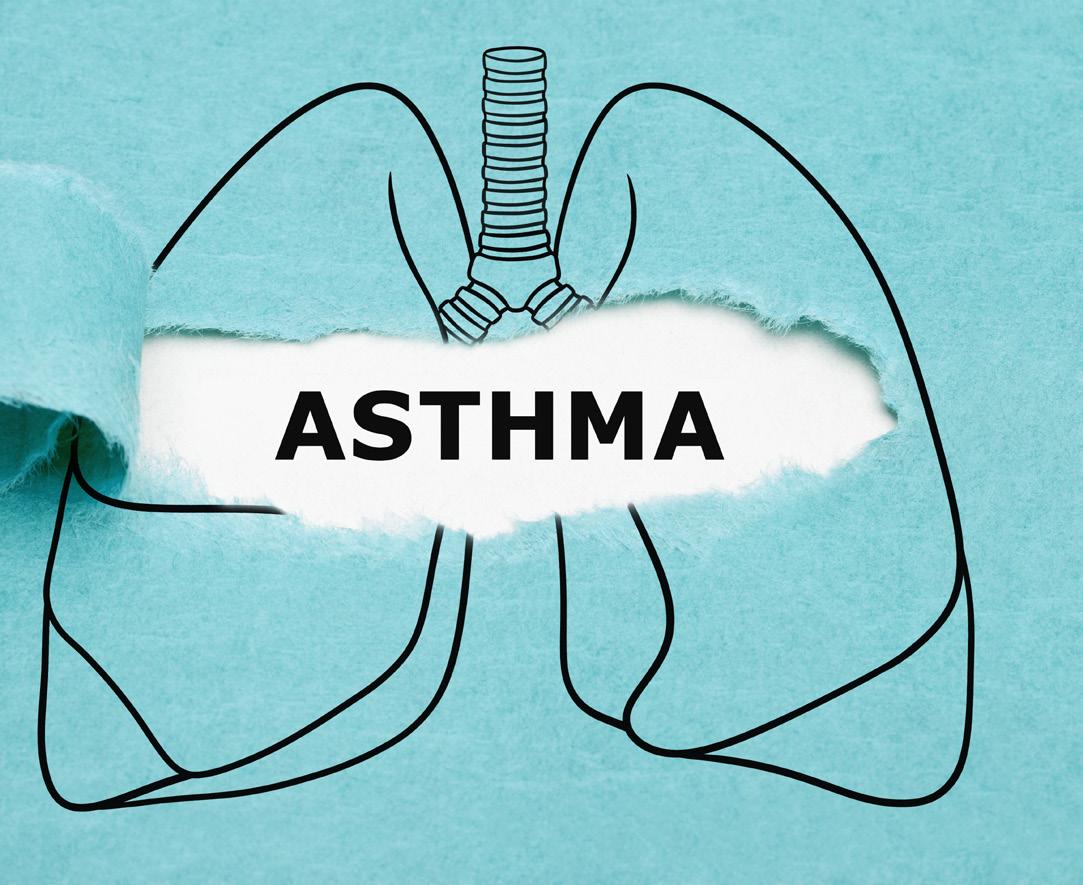
Prior to the approval, the FDA evaluated the drug's effectiveness in reducing severe asthma attacks in a randomized, double-blind, controlled study with patients who had moderate to severe asthma.
The patients in the study were randomly assigned to use either Airsupra or just albuterol on its own. Patients received treatment for at least 24 weeks.
The researchers looked at the time a patient had to the first severe asthma attack that required systemic corticosteroids for at least three days or an emergency room visit that led to taking the steroids or hospitalization for at least 24 hours. Adult patients treated with Airsupra had a 28% reduction in the risk of a severe asthma attack compared to those using just the albuterol. Airsupra is taken through two oral inhalations.
Most common side effects for those taking Airsupra were headache, an oral yeast infection, cough and difficulty speaking.
Samuel Gooldy has had quite the career in the medical field. He went to nursing school in 1965 and graduated in 1968. He joined the Army and served in Vietnam for a year and a half. Gooldy continued with his medical career after returning home from Vietnam.
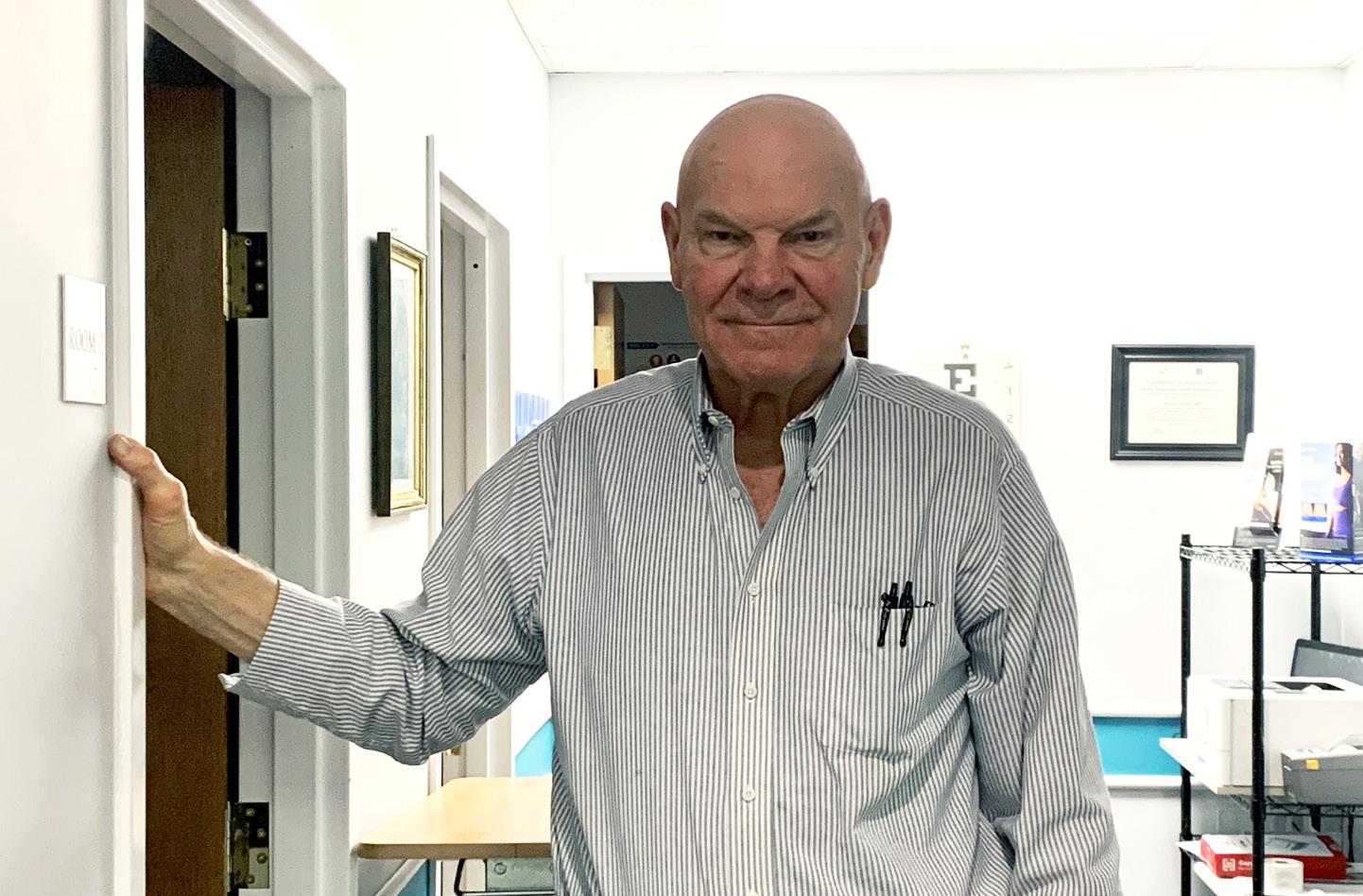
He went to medical school and graduated from the faculty of medicine at the University of British Columbia in Vancouver, Canada.
Then, he arrived in Utica in 1977 to start his residency at St. Elizabeth’s Medical Center. After graduating in 1980, Gooldy decided to stay and work in the Utica area.
Gooldy loves living in Mohawk Valley. He loves the seasonal weather changes this area provides yearround.
“We were here at the end of the residency and it was easy to stay here,” he said. “I like the weather. The cold weather doesn’t bother me very much. I love the change of seasons. I was born and raised in a high plateau dessert. The weather didn’t change very much, but here the fall is beautiful.”
He sees the valley as a stable area. There is less noise, construction and action.
“It’s stable here,” Gooldy said. “I have family that lives in Washington DC, and things are just so dynamic there. There’s a building that’s going up over here. There’s something being built over there. Things are changing every day. When you come back to Utica and New Hartford everything is pretty much the same. When things change, they change slowly. Sure a new business grows and an old business goes out of business, but it’s not overwhelming. You don’t lose track of what’s happening around you.”
These were the reasons why he stayed. Gooldy lived in the Mohawk Valley for years, but worked
at several different medical practices throughout Utica and New Hartford.
“I started my medical practice here in Utica,” Gooldy said. “I went to residency at St. Elizabeth and I’ve been in practice at several different locations in and around New Hartford and Utica. I got to know a lot of people, a lot of different doctors and a lot of different practices. I worked with groups, I worked individually and now I’m in solo practice.”
The years moving around from office to office stopped for Gooldy once he opened his own practice at 1 Oxford Road in New Hartford in 2002. He and his family are still working there today.
He started as a family physician.
“I always wanted to be a family physician,” Gooldy explained. “I have considered other forms of specialty practice, but by the time I graduated from medical school, I realized I wanted to be a primary care physician. In today’s world, you can move onto a lot of different things from family physician. I didn’t have the desire to move onto anything except do what I do, which is take care of the individual patients and get to know my patients.”
As a family physician, he got to know more about his patients. He established good connections and friendships with them.
“One of the problems when you’re an oncologist or a plastic surgeon, is that patients become too much of a commodity,” Gooldy said. “You don’t get the chance to know them. I get to know my patients. I know them very well and many of them I’ve known for 30 years.”
Gooldy loved his job. But the pay was not enough to keep his practice open. He discovered the dark secrets about medical insurance companies. How they pay their physicians less.
“Insurance companies don’t see the value in prevention,” Gooldy
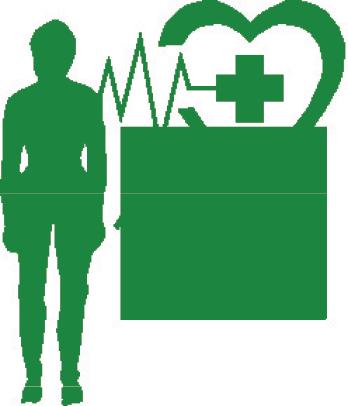
said. “Their goal is to put as much money in their pocket as possible. I guarantee you that every insurance company has somebody they employ, who their job title and goal is to reduce the amount of money that they pay primary care physicians and they continue to reduce the amount of money they pay me for what I do every year.”
He needed to find another source of income. He did so by getting medical laser machines.
The family physician became a laser practitioner.
The laser machines Gooldy purchased were designed to reduce the size of scars on people’s skin. He also does Botox injections. These injections get rid of the wrinkles on peoples’ faces.
Patients have to pay out of pocket for these procedures. They cannot use their medical insurance to cover it. This benefits Gooldy, as he gets the full payment and does not have to deal with the insurance companies. The money patients spend on this procedure is worth it, the doctor said, as they get to look younger and more beautiful.
“It’s almost impossible for me to function without a cash business on hand,” Gooldy said. “That’s what the laser business is. I can make cash through the laser business and support my practice. It’s not reimbursed by insurance because it’s cosmetic. So you end up paying out of pocket. The whole process took us a year to do the research so we can operate the machines we bought. We’ve been in the laser business for 12 years. Our reduction laser business can reduce the size of scars, so it becomes almost invisible. We can remove a lot of wrinkles on your face with the Botox. If you’re 45 and you don’t like looking 45. You like to look 27. We can do that for people and keep them looking that way with the various things we offer. The Botox, fillers and lasers —all those things help.”
He offers laser treatments and Botox injections to those who want to look younger or eliminate the scars and wrinkles on their skin. Gooldy is also continuing to work as a family physician offering yearly checkups and health advice to his patients. His goal, when starting this practice, is to improve his patients’ health, not their looks. He wants his patients to live to 85 or 90. He does not want them to make multiple trips to the hospital.
The doctor is doing whatever he can to help them live long healthy lives.
“My goal, I tell my patients, is to get them to the age when everything collapses,” Gooldy said. “If you can get somebody to the age of 85 or 90 without a major catastrophe in their life, they’re much more likely to die at home in bed and it costs the medical system much less. But if you have a heart attack when you’re 40, you’re going to cost the medical system a lot of money. You’re going to have hospitalization, you’re going to see the cardiologist, somebody has got to manage your diabetes and cholesterols. You’re going to be paying a lot more for your health, but if I can get your cholesterols down and manage your diabetes so that you don’t have that heart attack or stroke, the chances of you dying in bed is pretty good. Nobody wants to die while their kids are in college. They want to die when they’re 85 or 90. You’ve got to prevent that heart attack and stroke and that’s my goal.”



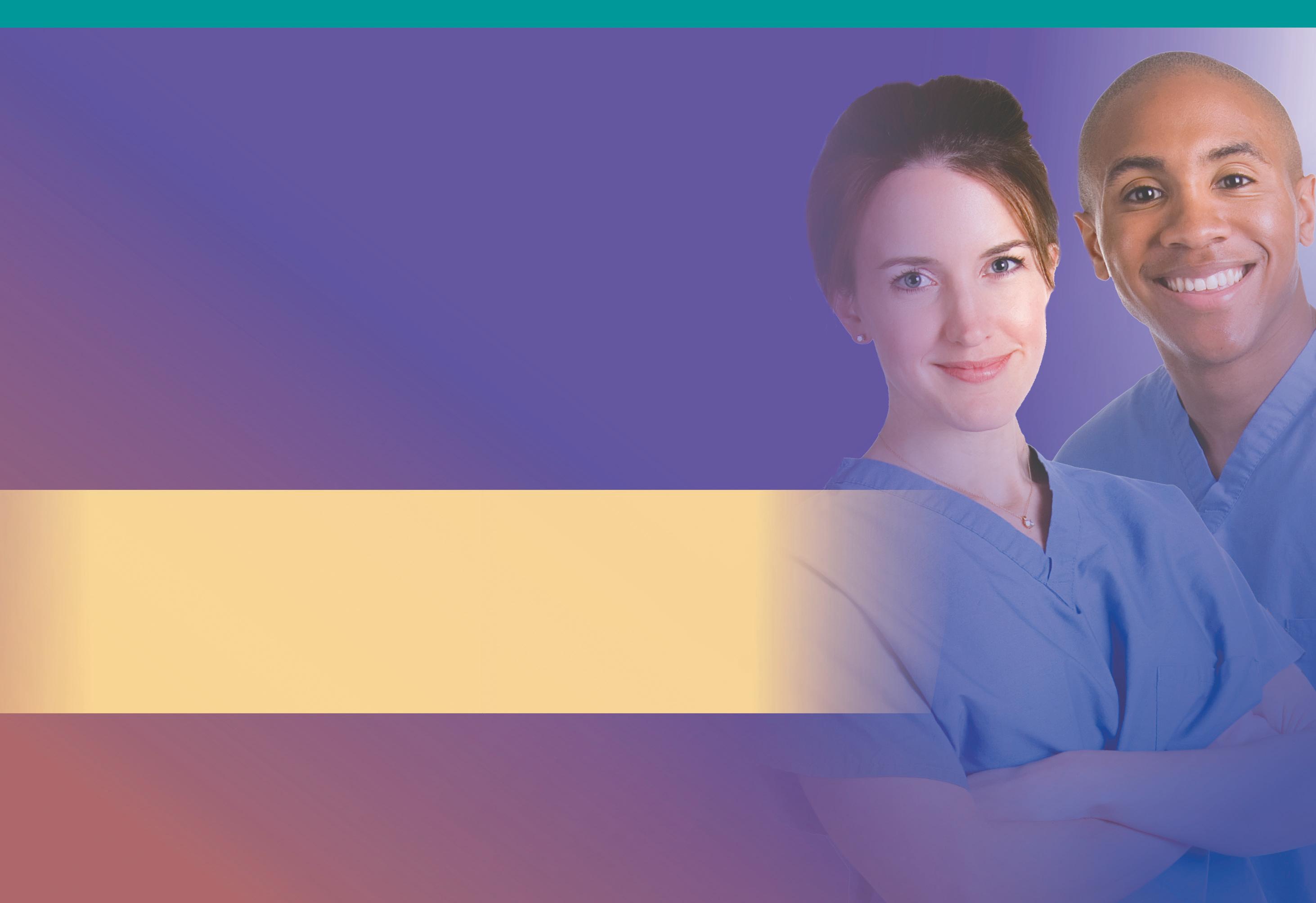

Cancer deaths continue to decline, dropping 33% since 1991 and saving an estimated 3.8 million lives, according to the American Cancer Society's annual statistics report.
But individual trends within that overall success story highlight the struggle to find the best ways to prevent, detect and treat cancer for all Americans, the society said.
On the positive side, the United States saw an “astounding” 65% reduction in cervical cancer rates
among 20- to 24-year-old women between 2012 and 2019, a direct result of human papillomavirus (HPV) vaccination, said physician William Dahut, chief scientific officer at the American Cancer Society (ACS).
“The effort that our children went through over the last 20 years or so to go through vaccinations have actually saved lives,” Dahut said, noting that the plummeting case level “totally follows the time when HPV vaccines were produced.”
Chief executive officer Karen
Knudsen added that “this is some of the first real-world evidence that HPV vaccination is likely to be effective in reducing cancer incidence and [death rates].”
Unfortunately, rates of advanced prostate cancers are on the rise, likely driven by confusion and conflict over screening guidelines, ACS officials said.
The second-leading cause of cancer death for U.S. men, prostate cancer cases rose 3% a year from 2014 through 2019 after two decades of decline, the report found.
There's also been a 5% year-overyear increase in diagnosis of men with advanced prostate cancer, “so we are not catching these cancers early, when we have an opportunity to cure men,” Knudsen said.

Black men, in particular, are being affected by the rise in prostate
cancer, according to the report.
“Black men, unfortunately, have a 70% increase in incidence of prostate cancer compared to white men and a two- to four-fold increase in prostate cancer [death rates] as related to any other ethnic group in the United States,” Knudsen said.
The nation's leading authority on health screening, the U.S. Preventive Services Task Force, recommends that men between 55 and 69 years of age discuss the potential benefits and harms of prostate cancer screening with their doctor and then decide for themselves.
American Cancer Society guidelines recommend that doctors discuss screening with men at an earlier age — 40 for those with a close relative who has had prostate cancer, 45 for men at high risk, and 50 for nearly all others.
According to a study sponsored by the Journal of the AMA, ransomware attacks on healthcare organizations have doubled over the last five years.
Last year, 374 reported attacks impacted the personal health information (PHI) of about 42 million people. The attacks are increasing in both frequency and sophistication. Worse yet, researchers believe these attacks are under reported. The top targets are health clinics, followed by hospitals, ambulatory surgery centers, mental health providers, dental practices and post-acute care providers like nursing homes. Larger, highly networked providers are most vulnerable because employees can access information remotely via cell
A survey recently conducted by American Well (AmWell) revealed 62% of respondents prefer virtual visits, even though it is relatively safe to return to in-person visits. Virtual provider Doctor On Demand reports a 50% increase in business since the fall. The pandemic has exacerbated ongoing economic, environmental and social issues. Notable increases in virtual visits were among men, seniors, millennials and Gen Z. A national BCBS study revealed millennials, versus baby boomers, are more likely to associate the impact of mental health upon physical health. They are twice as likely to develop Type 2 diabetes and almost three times more likely to have coronary heart disease.
92% of millennials feel the pandemic has negatively impacted their mental health. Consequently, alcohol use, smoking and vaping are increasing among that generation. As the millennial and Gen Z generations become more dominant in the overall US population, industry experts predict much more emphasis will be placed on long-neglected behavioral health care.
phones or personal computers, making it easier for hackers.
The healthcare industry was notoriously slow to adopt electronic medical records. Ironically, this made ransomware attacks possible. Healthcare organizations are required to report any breaches to their patients. CommonSpirit Health, the nation’s second largest nonprofit hospital system, faces a class action lawsuit for “failing to exercise reasonable care” to protect PHI. 600,000 records were hacked. Scripps Health will pay out $3.5 million to 1.2 million patients impacted by a breach in 2021. Each plaintiff will receive a minimum $100 with some receiving $7,500 for extraordinary suffering and out-ofpocket expenses.

Mifepristone or RU-486 is now available at local pharmacies, retail pharmacies like CVS and Walgreens and via mail order. The drug can be used up to 10 weeks gestation. To protect a patient’s privacy, the DOJ ruled the pill can be delivered via mail. No one must appear in person at a pharmacy to receive the drug. The FDA requires instructions on how to use the pill; information regarding the risks; shipping services must provide tracking; it must be dispensed and delivered in a timely fashion. Pharmacists are one of the most trusted providers, yet they are grossly underutilized. Most people would like to see them provide more services like testing for flu and strep throat and be a more active partner with primary care providers. By providing additional services, pharmacists can relieve a lot of the pressure on physician practices and community clinics.
As of December 15, 2022, enrollment is up 18% on the exchanges
from the same time in 2021, or about 1.8 million enrollees. The healthcare exchanges offer individuals without employer sponsored healthcare various commercial insurance plans. Premiums are based upon the individual’s income.
It contains several key healthcare items. Medicare reimbursement for physicians was to be cut 4.5% this year. Instead, the cut was reduced to 2% in 2023, but then another 3.5% cut in 2024. This cut comes at a time when practices are plagued with nursing shortages and inflation still around 7%-8%. $9.2 billion is earmarked for the CDC which is a $760 million increase from last year. Half of the increase is for future pandemic preparedness. Telehealth flexibility, which was to expire this spring, has been extended another two years. This includes paying providers the same for a virtual visit as an office visit. Medicare will cover marriage and family therapists and counselors and spend more on mobile mental health crisis providers. The spending package also continues enhanced payments to rural hospitals with high Medicare occupancy for two more years.
Per executive order, our 7,000 hospitals (for profit and nonprofit alike) must indicate who owns them and what the nature of that ownership entails. The information will be available on the CDC website. Skeptics wonder what is the point? There are no “secret” hospital owners. All of this is readily available on IRS form 990. In any event, it is another way for Medicare to make healthcare more transparent to the consumer. Skilled nursing facilities have been required to do this for years.
As of this writing, more than 7,000 nurses from Mount Sinai and Montefiore hospitals are on strike for better wages and safer staffing levels. The nursing situation in these
two hospitals is not much different than the nursing situation in most of our 7,000-plus hospitals across the country. The pandemic has wreaked havoc on the nation’s physical and mental health. More than a million people have died. The lingering impact of virus variants continues to swamp emergency rooms which end up treating admitted patients in hallways because inpatient beds upstairs are at capacity. Because of the nursing shortage, hospitals have had to close beds that cannot be safely staffed. So, capacity has been severely hampered. Hospital-based nurses and physicians are literally the front line in a “war” that has lasted three long years. The constant stress has caused a lot of these providers to either quit or retire early, leaving fewer of their colleagues behind to treat the higher patient load. And there seems to be little relief in sight. But increasing wages and adding staff requires, well, money. And cash-strapped hospitals just don’t have it. Hospital reserves are notoriously low. Unlike just about any other business, hospitals (and physicians) cannot solve the money problem by simply raising prices. Virtually no one would end up paying their new price because government and commercial payers set their reimbursement in advance. Based on federal and state budgets, there won’t be enough financial relief this year from either Medicare or Medicaid. And there won’t be much relief coming from commercial insurers because they tend to mimic what Medicare pays. Frustrated and exhausted nurses are on strike against their cash-strapped employers. But hospital administration is not the enemy. At some point, the AHA, ANA and AMA need to band together and “strike” against the payers.
Executive director of Samaritan Counseling Center, a nonprofit counseling service in Utica, says for the first time in history agency has a waiting list. ‘There are many, many people in our area that need help,’ he says
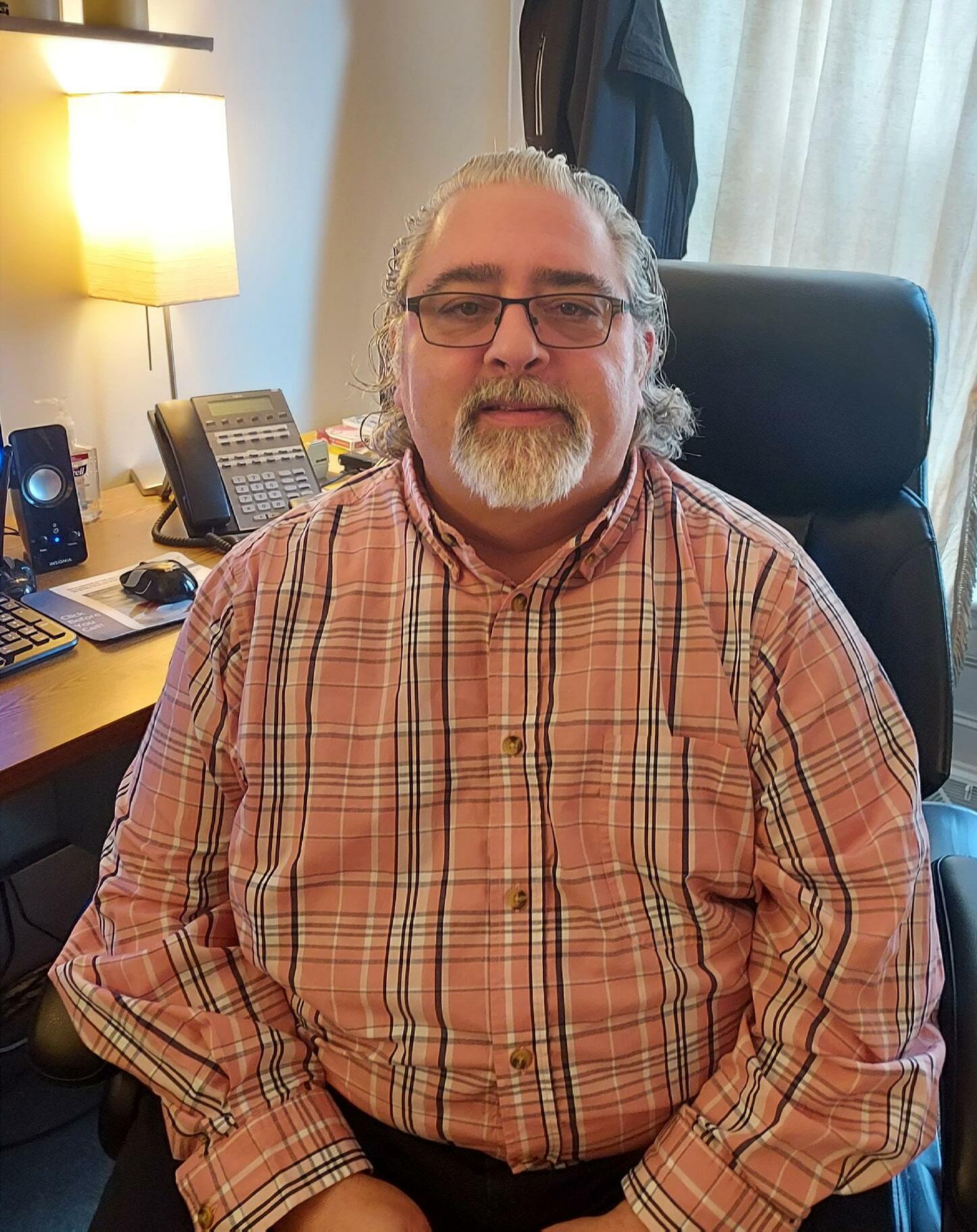 By David Podos
By David Podos
Q: How long has the Samaritan Counseling Center of The Mohawk Valley been around and what services do you provide?
A: We have been in Utica for the past 40-plus years. We are a nonprofit counseling clinic. One of things that make Samaritan unique is when working with a client we work with mind, body and spirit, so we incorporate that in our counseling as we are looking at the whole picture of a person.
Q: That’s great. So, who specifically are you and your staff counseling?
A: Basically, anyone who needs help.
Q: What kind of issues are people coming to your clinic with?
A: So, we will see people for example who are dealing with basic adjustment issues of life, such as life stressors, family issues, marriage, loss of income due to loss of employment and so forth. Of course, we see and counsel and provide therapy to those who have been diagnosed with any number of mental health
concerns such as depression and or anxiety. If we have a client that we feel needs more intensive therapy, beyond what we can offer, we will refer that client to the appropriate agency or clinic.
Q: How many therapists do you have on staff?
A: Presently, we have 12 therapists. All of us have different licenses. So, for instance we have licensed mental health counselors, we have licensed marriage and family therapists, as well as psychologists and social workers.
Q: Where do you get your referrals?
A: Because we utilize a spiritual integration process as one of our components to therapy, we get many referrals from local clergy. We also receive a good amount from local medical doctors as well. Of course, word of mouth is a good and positive way for people to “discover” us and the services we offer.
Q: Can a person self-refer?
A: Absolutely, they just have to call us and then we will begin the intake process to get them here or online for therapy.
Q: What age groups are your clientele from?
A: We work with just about all age groups, from children, to teenagers, to adults. My youngest client so far was the age of 5.
Q: During the COVID-19 pandemic, did you see your intakes go up?
A: Yes, and it has stayed that way. We actually have a waiting list and we never had one before. So there are many, many people in our area that need help.
Q: Do all your clients come here for their therapy sessions?
A: While we have and still continue to see our clients in person, we also are utilizing tele-help, offering clients the option to either come in or receive therapy via the internet through tele-help.




Q: Do you have other locations besides your clinic here in Utica?
A: In the past prior to the pandemic, we had a satellite office in Herkimer as well as an office in Rome. When the pandemic hit, we had to stop all that, because all in-person therapy came to a stop. So as of now, Utica is our only clinical office. At some point however, we are hoping we can have an office and clinic presence again in both the Rome and Herkimer areas.
Q: Where does the clinic get its funding from?









A: The majority of our funding comes from third party insurance reimbursement. We have also received some grant money from various foundations over the years.
Q: What if someone needs help and they do not have insurance of any kind and they are unable to pay out of pocket?
A: First of all, for those who do not have insurance and have a limited income, we do offer an outof-pocket sliding fee schedule based upon the person’s income. Additionally, we have what is called the Silent Samaritan Fund; that fund helps to offset the cost for our clients’ therapy if they have no other means of payment.
Q: What has been your biggest challenge for 2022 and what do you see is your biggest challenge for 2023?
A: From an executive director’s position, the challenge has been and continues to be what will the future of therapy look like. Traditionally you would meet your therapist face to face in a clinical setting. And now looking at the new landscape, we ask the question, ‘will insurance continue to reimburse for tele-health or not?’ If not, how will that impact us as a professional counseling business? The other challenge for us is making sure we can serve all the people that need help. As I mentioned earlier, we now have a waiting list and that list is growing.
Q: What was your operational cost last year?
A: About $750,000.
To Contact the Samaritan Counseling Center of the Mohawk Valley, call 315- 724-5173. Web site: samaritiancentermv.com
The U.S. Food and Drug Administration in January approved a second Alzheimer's drug, lecanemab, despite reports of rare brain bleeds linked to use of the drug in some patients.
However, the FDA pointed to the drug's benefits, as well.
“Alzheimer's disease immeasurably incapacitates the lives of those who suffer from it and has devastating effects on their loved ones,” physician Billy Dunn, director of the office of neuroscience in the FDA's Center for Drug Evaluation and Research, said in an agency news release. “This treatment option is the latest therapy to target and affect the underlying disease process of Alzheimer's, instead of only treating the symptoms of the disease.”
Lecanemab, made by Eisai and marketed by Biogen as Leqembi, will be only the second Alzheimer's drug to receive the FDA's blessing in the past 18 months; the agency's speedy approval of the drug Aduhelm in June 2021 generated controversy in the medical community over its lack of effectiveness, brain bleed concerns and hefty price tag.









But Alzheimer's experts said the story is somewhat different with Leqembi.
"Unlike Aduhelm, which had an incomplete data set and where clinical trial data failed to demonstrate a definitive slowing in cognitive decline, lecanemab showed statistically significant slowing in cognitive and functional decline, as well as reduction of brain amyloid levels, and downstream beneficial effects on other markers of neurodegeneration," physician Sarah Kremen, who leads the Alzheimer's Disease Clinical Trials Program at Cedars-Sinai in Los Angeles, said in a statement.
“We need — and are on the way to having — multiple drugs we can combine to personalize treatments to match each patient's Alzheimer's pathology, which will have a much greater impact on slowing the disease,” physician Howard Fillit, co-founder and chief science officer of the Alzheimer's Drug Discovery Foundation, said in a statement.
“Today's news is incredibly important and a source of optimism not only for patients, but also for the medical and research community,” said Fillit. “It shows us that our years of research into what is arguably the most complex disease humans face is paying off.”
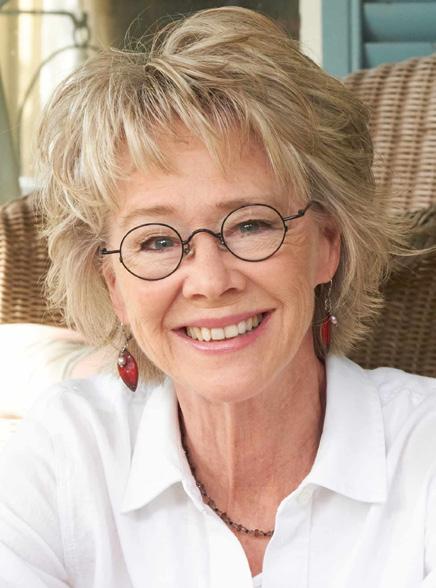
What’s a single person to do on Valentine’s Day?
Embrace it!
February (and that perennial “day of love”) is just around the corner, so why not beat Cupid to the punch?
Grab your proverbial bow and arrow, take aim and decide to warmly embrace Valentine’s Day with grace, confidence and humor.
Since the ball dropped on 2023, we haven’t been able to walk into a store, open a magazine or even shop online without being bombarded by candy hearts, roses, pink teddy bears and cards galore.
Yes, the countdown to Valentine's Day started even before we set down our glass of Veuve Clicquot. In full force, it's no wonder that those without a "special someone" on their arm may dread what Hallmark promises to be the most romantic day of the year.
What's a single person to do?
Before drowning your sorrows in a box of Godiva chocolates, consider
these tips for surviving the day dedicated to amour:
Adopt a new attitude
Take the broadest possible view of Valentine’s Day and decide it’s not just a day for couples, but a day to celebrate love in all its glorious manifestations: love of self, love of family, love of friends and — one of my favorites — love of pets!
Believe me, you won’t be the first to purchase an adorable, heart-festooned collar for your furry friend. Guilty!
Send cards with thoughtful mes-
Vaccinations among kindergarteners declined for the second year in a row, leaving hundreds of thousands of young children vulnerable to dangerous infectious diseases, U.S. health officials reported in January.
About 93% of kindergarteners had their required vaccinations during the 2021-2022 school year, including the measles-mumps-rubella (MMR), diphtheria-tetanus-pertussis, polio and chickenpox vaccines, according to a new study published Jan. 13 in the Morbidity and Mortality Weekly Report (MMWR), a publication of the U.S. Centers for Disease Control and Prevention.
That's down from 94% nationwide during the 2020-2021 school year and 95% for the 2019-2020 school year, the report found.
“While this might not sound significant, it means nearly 250,000
kindergartners are potentially not protected against measles alone,” physician Georgina Peacock, director of the CDC's Immunization Services Division, said during a media briefing on the findings. “And we know that measles, mumps and rubella vaccination coverage for kindergartners is the lowest it has been in over a decade.”
About 2.6% of kindergarteners had an exemption for one or more required vaccine, compared with 2.2% for the previous school year. Of those 2021-2022 exemptions, 2.3% were for non-medical reasons, the results showed.
The exemption numbers are “encouraging” in that they have remained low despite controversy and misinformation related to vaccines, physician Sean O'Leary, chairman of the American Academy of Pediatrics' Committee on Infectious Diseases,
sages to people you care about, buy one of those cuddly pink teddy bears for your favorite niece, connect with someone with whom you’ve lost touch, or treat your office mates, gym buddies, volunteers pals or bridge partners to some bagels (with cherry cream cheese).
Feeling brave? Surprise someone you’ve secretly admired with an invitation to get together. Maybe for coffee? A walk? A movie?
Why not? It’s just a day. Invite some of your single friends over for wine and pizza or agree to meet anywhere that’s not sporting a Valentine’s Day theme.
Raise a glass and toast to your independence, your freedom and your triumphant escape from the commercialism of this holiday. Valentine’s Day is only depressing if you let it be. Have some fun with it.
One of the best ways to avoid a downward woe-is-me spiral is to think about others in need and how you might brighten their day. Consider baking a little goodie for a neighbor who lives alone, calling your uncle who lost his wife last year or committing one of those random acts of kindness.
You might also spend Valentine’s Day celebrating your relationships with those you care about. Pick up the phone and tell your mother, father, sister, brother, uncle, aunt or
dear friend how much they mean to you. Ask how they are doing and listen with your whole heart. Chances are you’ll make their day!
Or show a little love for those less fortunate.
On Feb. 14, consider making a contribution to a local or national organization that helps people or pets in need. You’ll feel better for having expressed your appreciation in such a meaningful way.
Didn’t get around to making any New Year’s resolutions? Make Feb. 14 your new New Year’s Day and make good on those New Year’s resolutions that have yet to see the light of day: quit smoking or drinking, renew your membership at the gym (better yet, go to the gym), schedule your annual physical, organize your paperwork, and vow to do those things on your list that will improve your outlook, your health, and your future.
Your life, your best life, is in your own hands whether you are with or without a special someone. Make the most of it.
I know this may sound silly. But, I’m serious. After you get up on Tuesday morning, Feb. 14, make your bed, and then place a candy heart on your pillow. It will be waiting for you when you turn in later that evening, reminding you that you are loved by the person who matters most: yourself!
said during the briefing.
While the numbers for kindergarteners are concerning, another MMWR report detailing vaccinations among toddlers born in 2018 and 2019 offered some degree of hope.
That study found that vaccination coverage among 24-month-olds remains strong, “and even increased among children born in 2018 and 2019, compared to those born in 2016 and 2017,” Peacock said.

More than 90% of toddlers had gotten the MMR, polio, hepatitis B and chickenpox vaccines, the study authors reported.
However, the researchers found disparities in vaccine coverage among toddlers based on location, income and insurance coverage, Peacock added.
“The report found that coverage with the combined seven-vaccine series for children living below poverty or in rural areas decreased by 4 to 5 percentage points during the pandemic,” Peacock said. “The report also found the percentage of uninsured children not vaccinated by their second birthday was eight times that of privately insured children.”
Gaps in vaccine coverage lead to “entirely preventable” outbreaks, O'Leary said, such as two measles outbreaks reported in U.S. communities last year and a case of paralytic polio in an unvaccinated person in New York.
“These outbreaks harm children and cause significant disruptions in their opportunities to learn, grow and thrive,” O'Leary added.
“I enjoy giving back,” said 59-year-old Dale Seaton of Marcy.
“That’s the biggest part of why I volunteer. I like helping others; it gives me a sense of community.”
Seaton is a volunteer with United Way —an event coordinator —and a board member, in addition to working full time in information technology.

“He’s one of our most dedicated volunteers,” said Kristyn Bucciero Beckwith, director of marketing, United Way of the Mohawk Valley.
A multitude of remarkable social and physical benefits come from giving back.
For volunteers like Seaton, it’s almost a motto: “I like helping others, giving back. It gives me a sense of pride, a sense of community.”
“My volunteer work is a big part of who I am, of what I need to be,” he added.
Research confirms the physical benefits of volunteering. A Carnegie Mellon University study showed that volunteers are 40% less likely to develop hypertension as compared to non-volunteers. The type of volunteering didn’t matter. The only thing that matters is the amount of time spent, according to researchers. Volunteer time reported by study subjects was 200 hours a year.
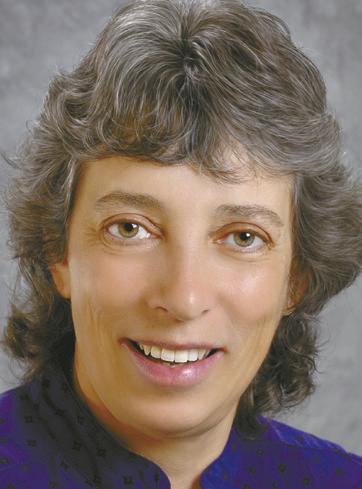
A Canadian study showed that about two hours a week appears to be the “sweet spot” that creates benefits. Benefits like better overall health, fewer physical limitations, fewer depression symptoms and a longer life.
Just being around other people makes us healthier. Volunteering increases social interaction and gives us a support system. One of the best ways to make friends is to volunteer.
It’s been proven that people with strong social networks live longer,
have less heart disease and cancer. They have stronger immune systems and recover faster from health problems. They’re happier people.
“United Way started me on the path to volunteering,” said Seaton. “My company asked for a volunteer to be the coordinator for the United Way campaign. I raised my hand.”
“I was the campaign coordinator at my job for six or seven years,” he continued. “This introduced me to the United Way staff. I’ve stayed involved with them.”
As an avid athlete, Seaton competes in running events and triathlons all over the state. An active swimmer, he’s the treasurer for his swimming league.
He coached the girls’ softball team for his daughter’s school and continued for 14 years, long after she was out of school.
“We use volunteers to help us with projects that take more hands than we have available in our staff,” said Beckwith. “We have several committees of local individuals. These volunteers give us their time, plus knowledge and expertise to help us do more.”
Some of the projects the United Way has accomplished through volunteers include “Born Learning Trails” in local parks throughout Oneida and Herkimer counties, a series of signs that offer fun, active learning activities for children. Volunteers pack “Welcome Home Kits” with supplies for families moving into their own apartments after being homeless; conduct annual counts of homeless persons; do diaper distribution.
Aside from the many health benefits of volunteering, there are other good reasons to consider volunteering: It’s a great way to prepare yourself for a career change, learn
There’s a new kid in town and he doesn’t play nice. His street name is tranq. That’s short for xylazine.
This veterinary horse tranquilizer causes drowsiness and amnesia. It depresses breathing, slows the heart rate and lowers blood pressure. Combined with other central nervous depressants like alcohol, benzodiazepines and opioids, tranq spells disaster.
Xylazine was developed in the 1960s as an anesthetic for vet-
erinary procedures. It was tried in human trials but caused severe respiratory depression and dangerously lowered blood pressure. So it was not approved for human use. It’s not a controlled substance, therefore it has not been monitored closely by the FDA. It was first used as a recreational drug in Puerto Rico in the 2000s. It began to take off as a cheap filler for drugs in 2018.
Drug dealers are adulterating opioids such as fentanyl and heroin with tranq.
new skills, explore other options, add experience to your resume, network with others to learn about job vacancies.
Volunteer jobs often lead to paid employment. There are a million volunteer opportunities. To consider what might be a good fit for you, first decide which causes you care about; volunteering for an organization that you feel passionate about will increase the chances that you’ll enjoy the opportunity. Think about whether you want to work with adults, children or behind the scenes.
The five different types of volunteer work fall into these categories: environmental, animals, social, health care, sports and leisure. Within each of these categories, you can find a wide range of volunteer projects and organizations to consider getting involved with.
Consider the skills you have that you enjoy using, as well as how much time, energy and effort you are willing to commit to. Be realistic about your availability; don’t over-commit yourself.
Research volunteer opportunities online. A great way to research is to use a volun teer website. For example, Volunteers United is an easy-to-use website where non profits list volunteer projects in the Mohawk Valley, powered by United Way of
This lengthens the euphoric effect.
But the depressive effects make it easier for users to overdose. Especially if other substances such as alcohol, cocaine, heroin, benzodiazepines, gabapentin, methadone and prescription opioids are also on board.
The prolonged period of stupor renders users helpless to fight off crimes like rape or robbery. When a user does wake up, they often emerge craving narcotics because their opioids have already worn off. Another “benefit” of cutting drugs with tranq is that it’s cheaper, allowing dealers to sell at a lower price.
Tranq is not reversed by naloxone. In case of an overdose, naloxone should still be administered to reverse the effect of any opioids also on board.
This drug can be injected, snorted, inhaled or swallowed.
Injected tranq can lead to skin ulcers and abscesses. These skin infections are often worse than the run-of-the-mill MRSA (methicillin resistant Staphylococcus aureus) infections, which are already pretty bad.
Tranq wounds develop thick
the Mohawk Valley.
Volunteers United is a free and centralized place where you can search and find local volunteer opportunities. It’s a great way to connect nonprofits looking for help, and those that wish to give back through volunteering.
See www.volunteersunitedmv. org. Or, Google “volunteer opportunities in (name your city).” Go to the
black crusts called eschars and the underlying tissue turns dead (necrotic). These infections are tough to treat and sometimes lead to amputation. A Google search for “tranq skin infections” images will reveal some of the horror if you need a visual.
How common is tranq? It has been detected in 36 states and the District of Columbia. In Philadelphia, more than 90% of street drugs test positive. In New York City, the number is 25%. And if it’s in NYC, you know it’s coming to Upstate New York.
I don’t have the answer to the opioid epidemic. But I hope this article raises awareness of this new threat.
“Never underestimate the empowering effect of human connections.”
I smile as I stick the vinyl letters of this quote on the kitchen of my new apartment. I thought carefully about what quote to put here. What means the most to me? What really defines me?
Connecting with others is what’s most important to me.
I strongly believe that we need connections with others to be happy. Though I’m quiet and reserved, and I do need my space, my time alone, I have a compelling need to connect with others.
I’ve just moved from a rural area, where for days I didn’t see any other living things than deer, raccoons, squirrels, even a bear lumbering through. I found that, after a few days without seeing another person, I’d get a little uneasy, on edge, so I’d hop in my car to go to the library, the 7-Eleven or somewhere just to see and hear other people.
Now I’ve moved into a senior retirement complex.
I don’t know anyone in the complex or the area. When I knew I had to move, I made a list of pros and cons about whether to live in a regular apartment or a senior residence.
A big deciding factor for a senior residence was that I’d have people right in the building. I wouldn’t have to get in my car and drive somewhere to find people. I could make friends with people who were my age and facing some of the same challenges; we’d support each other, get through this aging thing togeth-
er. It sounded more appealing and didn’t cost much more.
I firmly believe that belonging and connecting to others is a basic part of being human. We need people around us and this need is hardwired into our brains. We’re a social species. We don’t do well alone.
According to experts, our bodies actually tend to work better when we’re not alone. Being lonely has been linked to damaging physical and emotional health outcomes and poorer well-being. Experts recommend we connect with others in a social setting at least once a week. Even being around strangers is better than sitting alone at home.
I know I’ve got to step out of my comfort zone to get people in my life. Falling into friendships isn’t as easy as it was. I know I’ve got to make it happen. To get friends, I assume I’ll have to put out all the effort.
Here’s what I propose to do; maybe you’ll get some ideas from my plan. I’m considering it as a learning experiment. I’ll see what works and what doesn’t work.
First, I have to find some potential candidates. I’ve got plenty, right here. However, if you live alone, you’ve got to get in your car and go to where potential people are, like a library, learning in retirement center, church, senior center, volunteer.
As you meet people, smile, make eye contact, appear open. As I look for people to talk to, I look for those who make eye contact with me, smile at me, appear approachable.
Remember that most people are just as uncomfortable about this
.S. stroke deaths have dramatically declined in the past several decades. But, researchers caution, their new study also found the potential for a resurgence.

“After nearly four decades of declining stroke-related mortality, the risk appears to be increasing in the United States. Our research underscores the need for novel strategies to combat this alarming trend,” said lead study author Cande Ananth. He is chief of epidemiology and biostatistics in the obstetrics, gynecology and reproductive sciences department at Rutgers Robert Wood Johnson Medical School in New Brunswick, New Jersey.
“This study didn't identify a cause for this trend, but other research suggests the main culprits are increasing rates of obesity and diabetes,” Ananth said in a Rutgers news release.
The analysis of U.S. stroke deaths from 1975 to 2019 found that stroke deaths plummeted from 88 per 100,000 for women to 31. They
dropped from 112 per 100,000 to 39 for men.
Total stroke deaths fell despite the rise in age-adjusted risk because rates grow substantially with age.
Without further improvements in stroke prevention or treatment, the most recent figures show stroke death totals rising as millennials age. (Millennials were born roughly from the 1980s through 1990s.)
While age-adjusted stroke deaths per 100,000 people bottomed out in 2014, they climbed again during the study period's last five years.
“Starting around 1960, the later you were born, the higher your risk of suffering a fatal ischemic stroke at any particular age,” Ananth said.
For the study, the researchers used a comprehensive death-certificate database to identify virtually every adult under the age of 85 who died from a stroke during the 44 years of the study period. There were more than 4.3 million stroke deaths in all.
as you are, maybe even more so. Though we have a need to connect with others, most of us are uncomfortable actually doing it.
Once you’ve made an initial connection with someone, you’ve got to get a conversation going. I do this by asking questions; probably I ask too many which does put people off. But ask simple things like “Where do you live?” “How did you come to be here today?” etc. Your goal is to determine whether you click with this person, whether you have things in common.
Open-ended questions are best —questions that can’t be answered with a simple “yes” or “no.”
“Tell me more about . . .” is always good. Besides showing the other person you want to hear more, this can help you learn whether you have anything in common with them.
Look for the interests or experiences that you share. Maybe you like the same kind of music; both enjoy volunteering or have similar professional backgrounds. Use those common interests as the foundation of your relationship.
When you click with someone, invite them to do something with you. Exchange phone numbers, ask
them to do something outside of the situation you’ve met them in.
This is an important step. Many of us hit a wall here. I certainly do. We’re scared to put ourselves out there to be rejected. But if you don’t take action, you won’t form any new relationships.
Open up to the person you want to be friends with. Not too much, too soon — that puts off others. Trust is built when you are authentic, empathetic and perceived as competent.
Once you’ve made a new friend, stay in touch. Regular contact deepens your connection with others.
Barbara Pierce is a retired licensed clinical social worker with many years of experience helping people. If you would like to purchase a copy of her book, “When You Come to the Edge: Aging” or if you have questions for her, contact her at barbarapierce06@yahoo.com.

The investigators detected a steady rise in age-adjusted stroke risk from the late 1950s to the early 1990s.
The study also found that ischemic strokes have declined more than hemorrhagic strokes. In ischemic strokes, blood vessels to the brain are blocked. In hemorrhagic strokes, blood vessels leak or burst.
The fatality rate for ischemic strokes fell roughly 80%, compared to 65% for hemorrhagic strokes, the
researchers noted.
Disparities between men and women diminished with age, the findings showed. While at age 55, men were more than twice as likely as women to have a fatal stroke, the rates were virtually identical at age 85.
The findings were recently published in the International Journal of Epidemiology.
February may be the shortest month of the year, but it’s loaded with important holidays and events.
A lesser-known food holiday that happens on Feb. 23, but one still worthy of celebration, is National Banana Bread Day. Clearly, its founder thinks it’s the best thing since sliced bread!
Bananas, the star of this delicious quick bread, are one of the world’s most popular fruits, with annual worldwide consumption exceeding 100 billion. On average, Americans eat about 90 bananas per person every year.
Affordable and accessible, bananas have numerous health benefits that deserve some serious unpeeling.
Bananas are a rich source of carbs, which appear mainly as starch in unripe bananas and sugars in ripe bananas. Carbs provide fuel for daily activities and workouts and may also help reduce exercise-related muscle cramps and soreness. For those with diabetes, bananas can often be worked into one’s overall meal plan or as a healthy snack to aid with stable

blood sugars.
Hearts love bananas for more reasons than one. A good source of potassium—an essential mineral for maintaining normal blood pressure—bananas help keep our tickers ticking.
The fiber in bananas also does a heart good by helping to reduce blood pressure, quell inflammation, and ferry out bad cholesterol.
Lastly, bananas are high in vitamin B6, a critical vitamin that helps break down an amino acid (homocysteine) that, when elevated, has been linked to greater heart disease risk.
As mentioned, bananas boast a decent amount of fiber, with one banana providing about 3 grams of both soluble and insoluble fiber. In addition to lowering cholesterol levels, a banana’s soluble fiber absorbs water in the gut, which then forms a gel that slow downs digestion, keeps you feeling full, and slows the stream of sug- ar into your blood. Insoluble fiber, on the other hand, adds bulk to your stool, which helps keep you regular. In general,
foods that are high in fiber help with both weight maintenance and loss.
Just over 100 calories, nutrient-rich bananas are also a good source of immune-boosting vitamin C and have no fat, cholesterol or sodium.
Healthy Banana Bread
Adapted from wellplated.com
1½ cups ripe bananas, mashed (about 3-4)
1 large egg
1/3 cup plain Greek yogurt
2 tablespoons canola oil (or substitute applesauce)
1/3 cup light brown sugar
¼ cup pure maple syrup
1 teaspoon pure vanilla extract
1 teaspoon baking soda
½ teaspoon ground cinnamon
½ teaspoon salt
1½ cups white whole wheat flour
¾ cup chopped walnuts or pecans
Place the rack in the center of your oven and preheat the oven to 350 F. Lightly grease a 9-by 5-inch loaf pan and set aside. Mash the bananas in the bottom
of a large bowl until mostly smooth. Whisk in the egg, then the yogurt and oil.
Whisk in the brown sugar, maple syrup, and vanilla. Sprinkle the baking soda, cinnamon, and salt over the top, then stir until combined. Gently stir in the flour until barely combined, then fold in any mix-ins.
Scrape the mixture into the prepared pan. Bake for 50 to 60 minutes, until a toothpick inserted in the center comes out clean. Check at the 35-minute mark and tent with foil if the bread is browning too quickly at the corners. Place the pan on a wire rack and let cool for 15 minutes. Remove from pan and place on rack to finish cooling completely (for neat slicing), or enjoy warm and don't worry if the slices are messy.
TO MAKE MUFFINS: To bake this recipe as 12 muffins instead of a loaf, lightly grease a standard muffin tin, then divide the batter evenly among the cups. Bake at 350 F for 20 to 22 minutes, until a toothpick inserted in the center comes out clean and the muffins spring back lightly when touched.
Anne Palumbo is a lifestyle columnist, food guru, and seasoned cook, who has perfected the art of preparing nutritious, calorie-conscious dishes. She is hungry for your questions and comments about SmartBites, so be in touch with Anne at avpalumbo@aol.com.
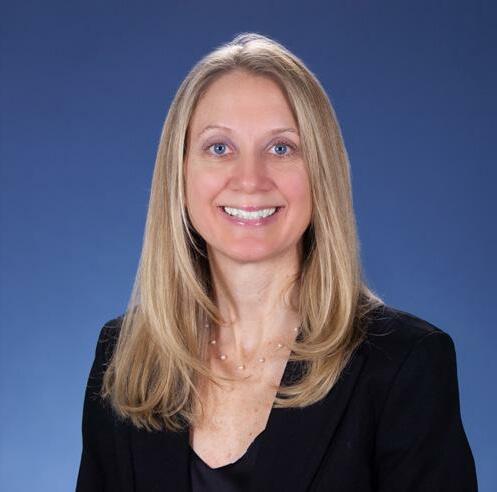
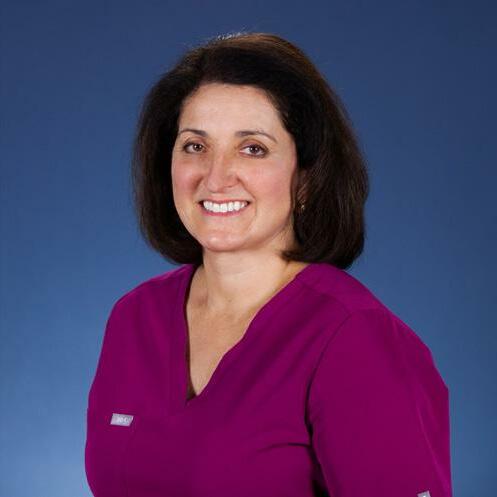

“All my stuff is in a storage unit!” said 82-year-old Bruce Korunda of Bradenton, Florida. “I was living in a big house, with a lot of nice furniture. I had a stroke, ended up in the hospital, then in rehab, and now I’m in a retirement community. My house was sold, so I guess I’m here to stay. I don’t know what to do about all my stuff!”
That’s probably the best reason for decluttering: As we age, the chances of an unexpected illness or accident happening to us increases. If something happens to us, it will be much easier for our family to handle our affairs if our home is decluttered. They won’t have to deal with the burden of clearing out our lifetime clutter and make decisions about what to do with everything.
What is decluttering?
It’s decreasing your stuff. Getting
rid of a lot of stuff.
Clearing out all the accumulated stuff: “That’s the biggest part of what we do,” said John Granza, owner and operator of John’s Clean-Outs and Property Preservation in Rome. “So many people leave a mess for their kids.”
“That’s the biggest reason to do it — so you don’t leave a big challenge for your kids,” he added.
“Sorry, nobody wants your parents’ stuff,” a blog on Nextavenue. org by Richard Eisenberg went viral. He wrote this after his father died, leaving an apartment full of stuff valuable only to himself.
“I learned the hard truth that others in their 50s and 60s need to know,” he said. “Nobody wants the prized possessions of your parents — not even you or your kids.”
As we age, it’s a good time to
You’re not alone. Almost all of us will lose our hearing as we age
By Barbara PierceThe statistics are alarming. Almost all of us will lose our hearing as we age.
According to the National Institutes of Health, approximately one in three people between the ages of 65 to 74 have hearing loss. Nearly half of those older than 75 have difficulty hearing.
In fact, hearing loss is the third most prevalent chronic health condition facing older adults, according to NIH.
Most of us don’t want to admit we have trouble hearing. Unfortunately, only 20% of those who have hearing loss admit they have it and look for help, according to the American Speech-Language-Hearing Association. Admitting to hearing loss makes one feel old; there’s a social stigma around this — or so they think.
Others may not realize their
hearing is diminishing or consider it a normal part of aging or can’t afford the cost of hearing aids.
“I compare it to expecting that you’ll need glasses to see up close as you get older,” said board-certified hearing aid specialist Robert Bishton of Hamilton Hearing in Hamilton. “Hearing loss is common and shouldn’t be ignored or dismissed as a normal part of aging.”
Left untreated, hearing loss can have serious consequences. Hearing loss has been identified as one of the top risk factors for dementia.
A new study at Johns Hopkins University found that older adults with hearing loss have a greater risk of developing dementia than those who do not have hearing loss. Cognitive abilities decline faster when one has hearing loss. Those who wore hearing aids have less of a risk.
Hearing loss makes the brain
reassess what’s important to us and let go of anything that no longer serves us.
Is there a right age to declutter? “That’s a tough call,” said Granza. But there is a wrong age and that’s when you’re too frail, too unwell or too overwhelmed to do the job adequately.
“We had the wisdom to move into our retirement home 15 years ago,” said 86-year-old Sarah Dick of Port Charlotte Florida. “We’re settled here, have friends, visitors and a rooster of doctors. I advise people to seek and adjust to such a move when you’re young and peppy enough to make friends and create a new home.”
“Probably the best time is shortly after retirement,” advised Granza. “When you’ve established what your last residence will be. You’ll have the mental and physical energy to focus and concentrate on what you’ll need and what you don’t need.”
The No. 1 trick to downsizing is starting before you think you need to, according to other experts. This means months, even years, in advance, not weeks. This is a task that takes longer than you expect at every turn, but offers benefits to those who persist.
Decluttering can reduce stress, clear out clutter and make your home more functional and organized.
One consideration is whether to hire a professional to assist you. There are pros and cons to both hiring a professional or doing it yourself. The decision ultimately comes down to your personal preferences.
If you decide to do it yourself, keep in mind that it will probably take a while. Do you have the patience to keep going even when decisions get difficult? The energy to continue a long, exhausting process?
If you decide to hire a professional, interview several candidates
work harder, forcing it to strain to hear and fill in the gaps. That comes at the expense of other thinking and memory systems. Another possibility is that hearing loss causes the aging brain to shrink more quickly. A third possibility is that hearing loss leads people to be less socially engaged, which is hugely important to remaining intellectually stimulated. If you can’t hear very well, you may not go out as much, so the brain is less engaged and active.
Without question, the most challenging aspect of hearing loss is the effect it has on our relationships. Hearing loss makes it more difficult to interact with people. When people have a hard time hearing what others are saying, they often start to avoid situations where they know they will experience difficulty hearing. Similarly, loved ones may find communicating with a person with a hearing loss too difficult and avoid speaking with them.
This can lead to social isolation, which can lead to depression. The combination of isolation and depression is also a risk for dementia. Frequently, a person with a hearing loss may be mistaken for one with dementia.
According to a NIH study, hearing loss was significantly associated with an increased risk of depression in adults of all ages. Untreated hearing loss, social isolation and de-
before making a decision, Granza suggested. He offers to meet you and give you a quote at no cost.
“An important point when you’re hiring someone is to make sure the company has, not only commercial insurance, but workers’ compensation coverage for their employees,” said Granza. (Worker’s compensation insurance provides benefits to workers who are injured on the job.)
“A lot of accidents can happen during a clean out. You could have a potential lawsuit on your hands. This is the last thing you want to deal with when you’re downsizing. There’s a world of frivolous lawsuits today,” he said.
“I can’t stress this enough!” he continued. “Hire a reputable company, with a good reputation, and fully insured, with worker’s comp.”
Suggestions for those who want to do it yourself:
Start small. Do one closet at a time, one drawer at a time, so you don’t become overwhelmed. Very few people can focus for more than three hours. Stop before you get stuck so you can start again tomorrow feeling positive. And take frequent breaks.
Another expert says start with 10 minutes at a time. You will make progress if you do this consistently. Have three large bags or boxes. Label: “Keep” “Toss” and “Sell or Donate.” At the end of the day, put away what’s in your “Keep” pile and toss the “Toss” stuff into the garbage. Remember that sorting possessions is an emotional task as much as a decluttering one. But keep in mind that it’s not fair to your kids to leave it all to them.
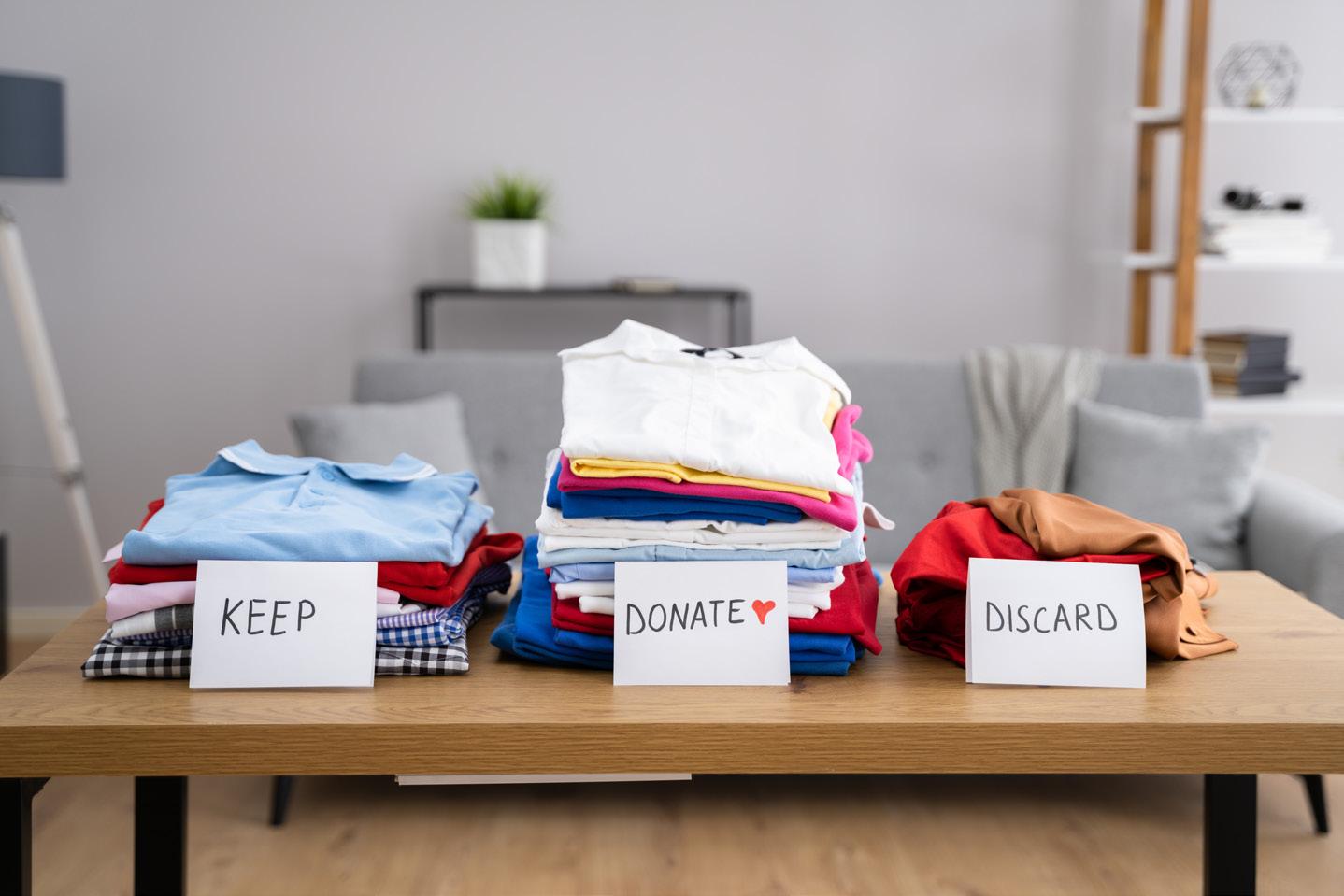
Decluttering is empowering. You’ll feel so good when you’ve completed it.
pression all contribute to an overall poorer quality of life.
Hearing loss also causes falls. Even a mild degree of hearing loss triples the risk of an accidental fall. In the ear, balance and hearing are directly connected, sharing a common nerve pathway to the brain.
Sudden deafness —an unexplained, sudden loss of hearing, usually in one ear—should be considered a medical emergency. Visit a health care professional immediately, as delaying diagnosis and treatment may decrease the effectiveness of treatment.
Experts recommend that everyone have their hearing tested once a year, to identify issues early on and treat them before they become a severe problem.
Hearing problems that are ignored or untreated can get worse. Hearing aids, special training, certain medicines, and surgery are some of the treatments that can help.
The most common treatment for hearing loss is the use of traditional hearing aids; more than 90% of persons with hearing loss can be successfully treated with hearing aids.
While there’s nothing you can do to prevent a hearing loss from progressing, the earlier you adopt the use of hearing aids to treat hearing loss, the better the long-term treatment outcomes will be, suggested Bishton.
 By David Podos
By David Podos
Audiologist Jim Bremer is owner of Bremer Hearing and Audiology in Mohawk Valley.



His parents started the business in the early 1950s. His dad became a hearing aid dispenser and opened his first office in 1956 in downtown Utica. He also opened an office in Rome and eventually expanded to Auburn, Oswego, Herkimer and Syracuse.
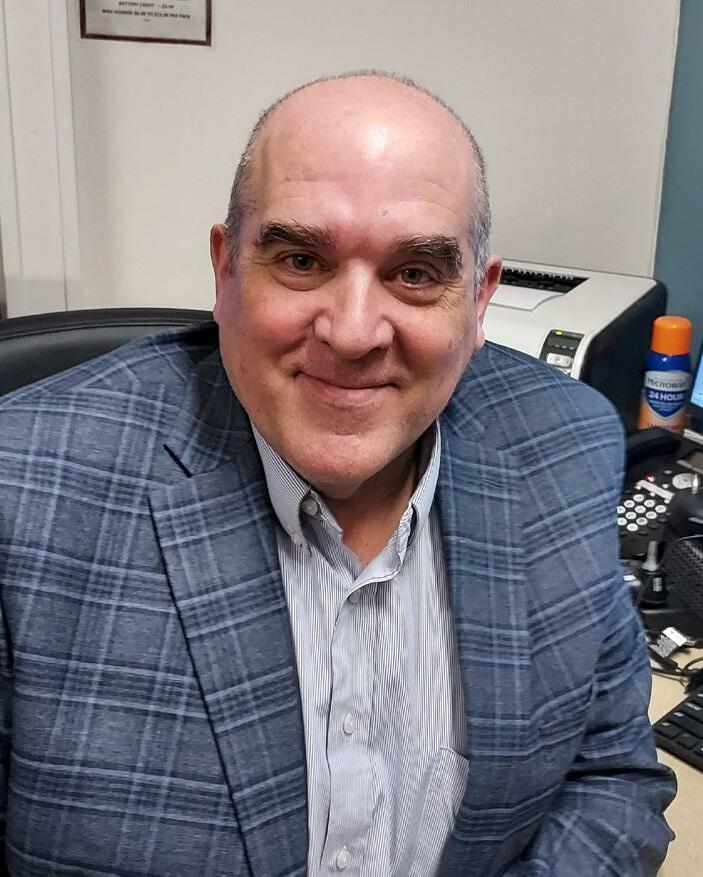
“My dad retired in the mid-1990s and I bought the business from him. In 2007 I sold most of the offices to a large national audiology company, worked for them for a while, then decided to re-open under my family name once again,” Bremer said. “Now we have two offices, one in New Hartford and the other in Rome.”


His business offers many services to the local community who suffer from hearing loss.
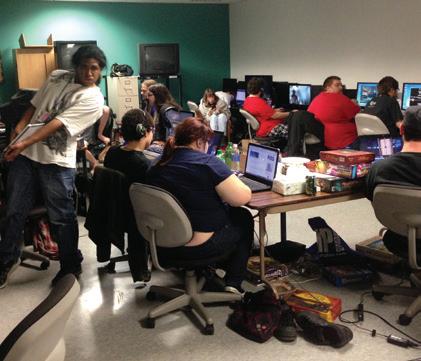
“We offer audiological services, testing, hearing aid services, assistive devices, as well as ear molds for musicians for ear protection,” he said.
Bremer said his practice sees all different kinds of people from all different ages with varying issues of hearing loss. He said he noticed that the age group is getting younger.
“Many of the people we serve are getting younger and younger. We see people who are in their early 40s and 50s. Of course, we still see a high number of patients who are much older,” he said. “For those who are younger, we can partially contribute their hearing loss to family history, where other members of the same family are experiencing hearing loss, so it is definitely tied in with family genetics. In fact, hearing issues run

very strong in my own family. My brother for instance has a cochlear implant.”
Cochlear implants are for people who have severe hearing loss. It is an electronic devise that consists of two parts; one that sits behind the ear, the other part is surgically placed under the skin.
“Many of our patients have suffered from bad ear infections when they were children and that caused them to have hearing loss later in life. For our older patients they experience hearing loss as they continue to go through the aging process,” Bremer said.
Technology has certainly improved the quality of hearing aids, he added.
“The latest thing with hearing aids is over-the-counter hearing aids. People can go to the store buy a pair without a prescription and they are self-fitting. However, in my professional opinion they are like eye glass cheaters, the kind you buy in a store without seeing an eye doctor to get a proper exam and proper eye prescription. So, eventually many patients will find themselves seeing an audiologist like myself for a proper hearing aid that’s exclusive for their particular hearing loss,” Bremer explained.
While hearing aids overall are getting smaller and smaller, he said that’s not always the best choice.
“Very small hearing aids often times make it more difficult for correct fitting and in general, they also might not work as well as the over the ear hearing aids,” he said.

Bremer added that hearing aids
are very different from ones 20 or 30 years ago.
“Since I started 30 years ago, hearing aids are completely different. The hearing aids today are not only able to process sound, but they know what direction that sound is coming from. As noise rises around you the hearing aids can amplify those sounds that are in front of you making it easier to hear when someone is talking so the background noise does not dominate, so the hearing aids are self-adjusting,” he said. As an audiologist Bremer can also pair your hearing aids to devices such as blue tooth or your Apple or Android cell phone. Bremer holds a master’s degree in audiology and in 2002 received his doctorate in audiology.
The National Institute of Health provides a snapshot of the percentage of people in the United States who are experiencing some level of hearing loss. It might be surprising to know that the extent of hearing loss among a wide range of demographics in this country is quite alarming.
According to the NIH records, about two to three out of every 1,000 children in the United States are born with a detectable level of hearing loss in one or both ears. Approximately 15% of American adults (37.5 million) 18 and older report some trouble hearing. One in eight people in the United States (13% or 30 million) 12 or older has hearing loss in both ears, based on standard hearing examina-



tions. Age is the strongest predictor of hearing loss among adults aged 20-69, with the greatest amount of hearing loss in the 60 to 69 age group.


There are many conditions that can cause hearing loss, some of the more common ones are, earwax buildup, viral infections, ruptured eardrums, which are quite common according to NIH stats, [particularly] by injuring the ear (tympanic membrane perforation) from poking the ear with a cotton swab.

There are other issues as well that can cause hearing loss such as taking certain medications, (aspirin in large dosages, non steroidal anti-inflammatory drugs, and diuretics to treat high blood pressure and heart failure). Illnesses such as measles, mumps, and diabetes to name a few can also contribute to hearing loss.
An ear nose and throat doctor is trained to diagnosis hearing loss and what form of treatment would be best. These could include for example, surgery, medications and or hearing aids.
For many people with hearing loss, hearing aids are often life savers, providing an improvement in their overall hearing. Audiologists are professionals with years of college education enabling them to treat hearing disorders and recommend proper hearing aid devices.
‘Many of the people we serve are getting younger and younger. We see people who are in their early 40s and 50s.’
Jim Bremer, owner of Bremer Hearing and Audiology
You’ve heard the terms “heart attack” and “cardiac arrest,” but do you really know what they mean?
Each describes a life-threatening cardiac event but understanding the difference could help you save someone’s life.

“A heart attack is a plumbing issue — an artery that brings blood to the heart is blocked,” says physician Lorna Fitzpatrick, vice president medical affairs and senior medical director at Excellus BlueCross BlueSh-

ield. “Victims are usually conscious, and while they need medical attention quickly, an electrical charge from an automated external defibrillator (AED) may not be needed because often, the heart is beating and the victim is breathing.”
According to the U.S. Centers for Disease Control and Prevention (CDC), signs that someone is having a heart attack include chest pain or discomfort; feeling weak, light-headed, or faint; pain or discomfort in the jaw, neck, or back; pain or discomfort
in one or both arms or shoulders; and shortness of breath. Other symptoms of a heart attack could include unusual or unexplained tiredness and nausea or vomiting. Women are more likely to have these other symptoms. Anyone experiencing one or more of these symptoms should seek medical attention immediately.
“Cardiac arrest, also known as sudden cardiac arrest, is an electrical issue that occurs when the heart’s electrical system malfunctions,” says Fitzpatrick. “Without warning, the victim collapses and stops breathing.”
The heart is electrically active but is unable to beat in a regular rhythm, and therefore unable to pump blood to the brain or other organs.
Medical attention is needed immediately, or the victim will die.
According to the American Heart Association, more than 350,000 Americans outside of hospitals die each year from sudden cardiac arrest, meaning they were stricken at home or while out in public.
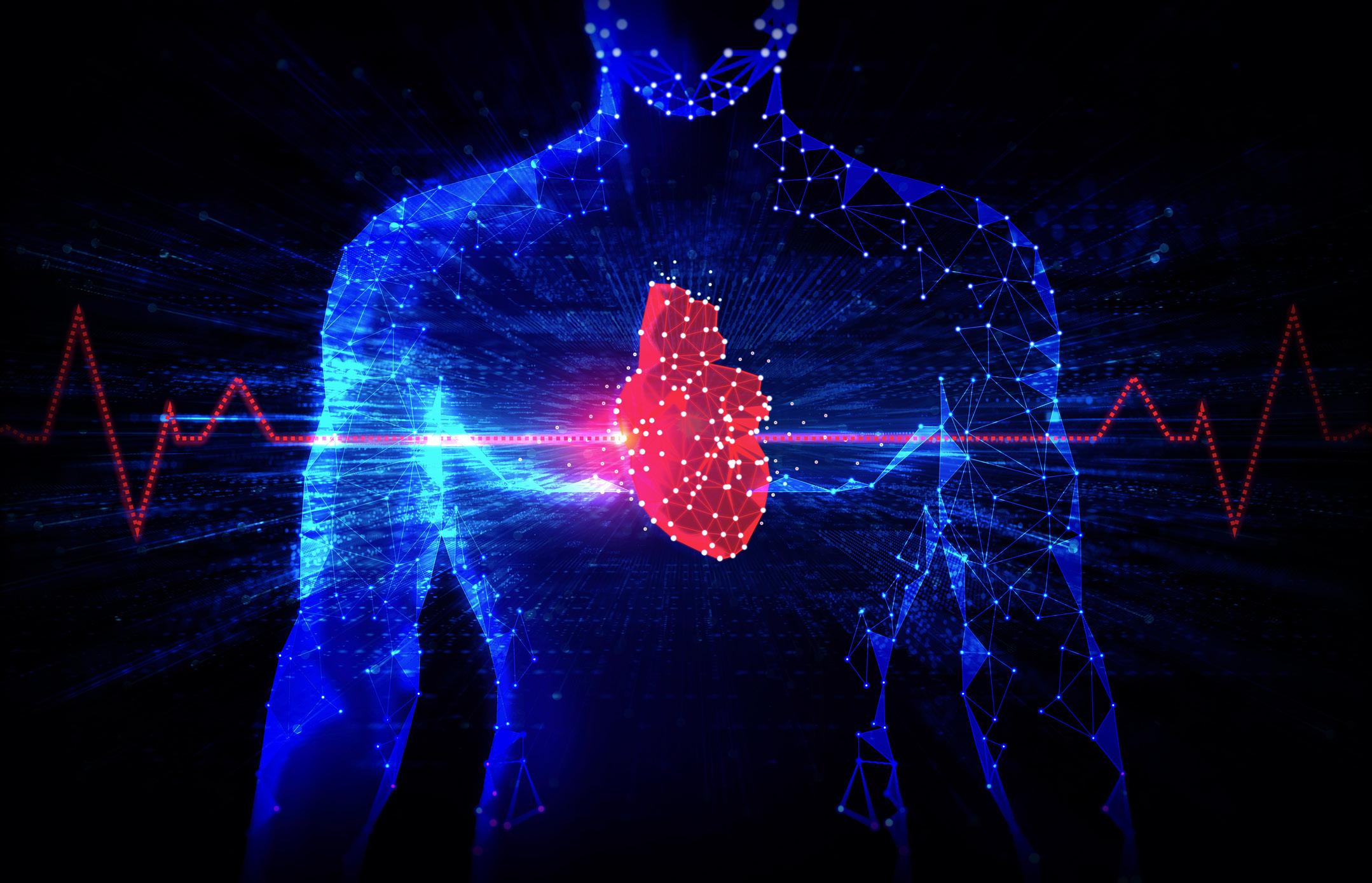
“Cardiac arrest can sometimes be reversed if CPR is immediately performed, and an AED is used within minutes to shock the heart into stopping its chaotic rhythm,” says Fitzpatrick. “You never know where or when it will occur, which is why it is vital to have as many people as possible trained in CPR and have AEDs available in places where people gather and also participate in athletic activities.”
Many AEDs issue spoken commands. If the device detects a shockable rhythm, it will provide voice instruction on how to deliver an electrical charge. If it doesn’t
detect a shockable rhythm, it will not allow a shock to be administered. In the absence of any cardiac electrical activity, CPR offers the only chance for survival until medical professionals arrive.
Fitzpatrick urges everyone to take CPR training where they’ll also become familiar with using an AED. To find a CPR class near you, visit RedCross.org, or the American Heart Association website at Heart.org.
tionally sensitive to caffeine’s effects and it should be avoided a minimum of six hours before retiring to bed. Alcohol is a depressant which may initially help you fall asleep but after a few hours, you may wake up, decreasing the quality of sleep needed. Alcohol should be avoided a minimum of three hours before heading to bed to avoid disturbing the quality of sleep.
Limit the bed to bedtime activities such as sleep and sex. Avoid using the computer for work or scrolling social media on your phone from bed. This type of activity can cause stress eliminating the restfulness needed for sleep.



Supporting the health of your heart is more than eating clean and hitting the gym.
Heart-healthy habits consist of many factors.
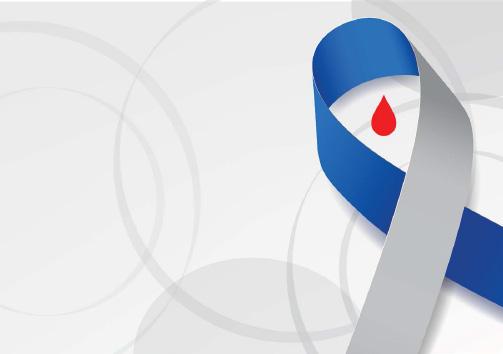
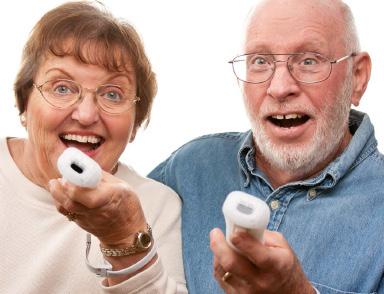
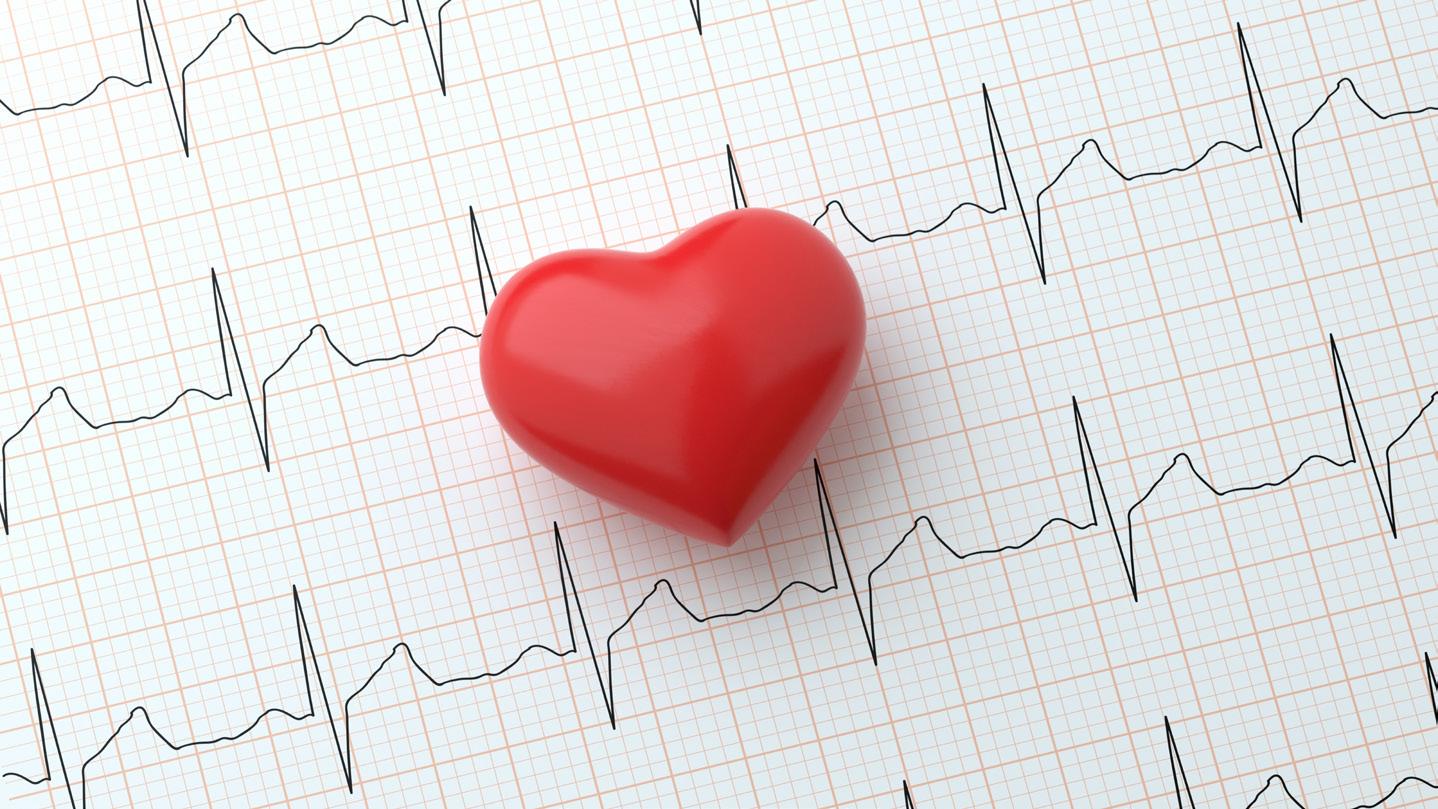
An important one that is overlooked is sleep. Poor quality, the lack of sleep and other lifestyle habits can contribute to cardiovascular disease.
Sleeping seven to nine hours nightly, eating heart-healthy foods and getting in cardio and strength workouts five to seven days a week will encourage a healthy heart. Less sleep can contribute to high blood pressure, diabetes, and heart issues.
What are some great ways to encourage quality sleep?

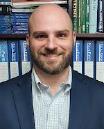


A regular routine sleep schedule is the best way to set your internal clock. Going to bed and waking up at the same time daily teaches your body to expect sleep and awakening at specific times.

Eliminate the use of your iPhone, iPad, television and computer approximately one hour before going to

bed. These devices emit “blue light” disrupting the production of melatonin, the hormone that helps you fall asleep. Keep devices out of the bedroom — charge your phone in the kitchen overnight.
Daytime napping may seem like a great idea when you’re not getting the necessary sleep at night. Lengthy naps can produce grogginess on awakening and decrease the quality and length of nighttime sleep.

Limiting your nap to 10 minutes may increase productivity and alertness.
Avoid heavy meals and latenight snacking before bed. Consider an eating cutoff of 8 p.m. This is individualized and some may need to stop earlier. Eating later in the day disturbs sleep patterns and may cause weight gain. The timing is included for limiting fluids, too. Drinking water or even caffeine-free tea can cause middle of the night wakening to use the bathroom which in return can create difficulties in falling back asleep.

Again, use 8 p.m. as a cutoff time.
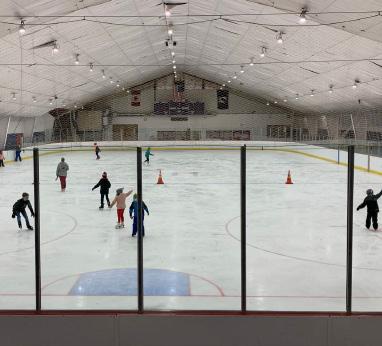

salts bath (about 10 minutes is all that is needed) with therapeutic grade essential oil added can calm the body producing restful sleep. Magnesium (Epsom salts) calms the body. Magnesium can also be taken in supplement form (discuss with your health care provider as to which form is best for you).



Supplements such as melatonin, magnesium, GABA and valerian root may aid in sleep. Please discuss with your health care provider if any of these would be beneficial.
The bed you sleep in may seem obvious for a good night’s sleep, but when was the last time you got a new mattress? A new pillow? Even new sheets? These items play a role in your comfort and overall support, falling asleep and staying asleep.
Mattresses, pillows and sheets require individual preferences and may take some time to adjust to the new especially if you have chronic neck, back or shoulder discomfort.
Room temperature is recommended to be between 60 and 67 degrees Fahrenheit to initiate sleep and improve sleep quality. Adjust the thermostat as needed.

There are a lot of possibilities to encourage great sleep and improve your heart health at the same time. Start with one suggestion at a time and discuss with your health care provider as needed.

Breathe. Balance. Benefit.

This ad will appear at the classification of:


















If you’re having trouble falling asleep, get up instead of lying in bed tossing and turning. Go to another room and read a book or put on some calming music. Make sure the lighting is dim and warm. When you start to feel drowsy, head back to bed.
Limit or avoid caffeine and alcohol. Caffeine (coffee, tea, chocolate, soda, over-the-counter medications) is a stimulant which can disrupt nighttime sleep. Some may be excep-
Physical movement can improve sleep. Regular aerobic exercise (walking, jogging, yoga and more) consisting of about 30 minutes daily is beneficial for the heart, lungs and body composition. If possible, exercise outside during the day to acquire the benefits of sunlight. Exercise is also a great way to relieve stress and boost your mood.
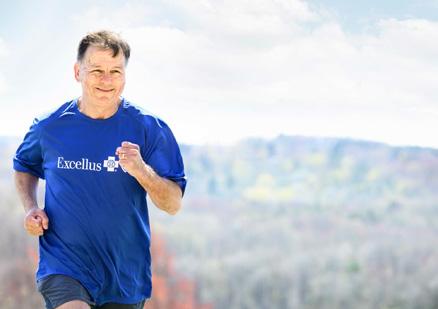


Deep breathing exercises and meditation are stress relievers as well. Deep breathing helps to slow the heart rate and relax the muscles preparing the body for sleep.
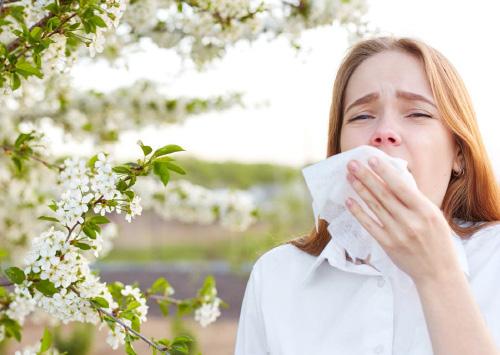
Meditation may be new to some. So to start, sit or lie down and concentrate on the breath for five minutes. Increase as tolerated reaching 30 minutes in one session.
Self-care consisting of an Epsom
Deborah Dittner is a family nurse practitioner and health consultant. Her mission is to transform as many individuals as possible through nutrition and lifestyle changes. For more information, check out her website at www.debdittner. com or contact her at 518-596-8565.


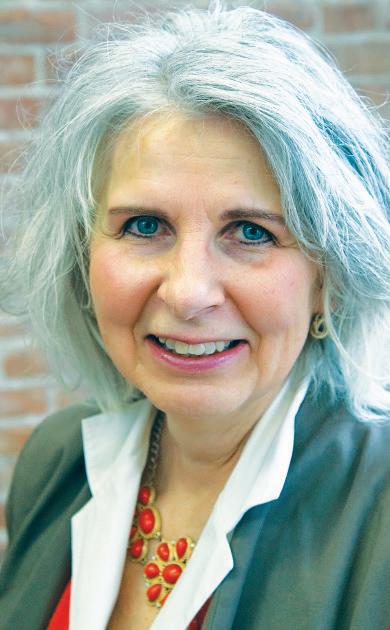


Financial education helps people learn about savings, credit and loans. It also helps prepare people for life changes and weather the unexpected. Financial knowledge is essential when planning for retirement.
So, how prepared are adults in the United States for their retirement? The National Endowment for Financial Education (NEFE) conducts polls on key issues, like retirement savings, that affect a person’s financial past, present, and future.
Here’s what we have learned over the past year:
• In a financial well-being poll conducted during the COVID-19 pandemic, 85% of respondents confirmed that some aspect of their personal finances was causing them stress. For 31% of respondents, that concern was “having enough saved for retirement.”
• In that same poll, 70% said they made financial adjustments due to the COVID-19 pandemic. Of that group, 27% increased contributions to their emergency savings, retirement savings, or other savings or investments. In comparison, 21% tapped into emergency savings—or borrowed against retirement savings.
Q.: My spouse doesn't have enough work credits to qualify for Social Security retirement benefits. Can they qualify on my record?





A.: A spouse receives one-half of the retired worker's full benefit unless the spouse begins collecting benefits before full retirement age. If the spouse begins collecting benefits before full retirement age, the amount of the spouse's benefit is reduced by a percentage based on the number of months before he or she reaches full retirement age. You can learn more by reading our online publication, Retirement Benefits, at www.ssa.gov/pubs.
Q.: Is it true that a person can own a home and still be eligible for Supplemental Security Income (SSI) benefits?


A.: Yes. A person who owns a home and lives in that home can be eligible for SSI benefits. Although there is an asset limit for people to qualify for SSI, some things don’t count toward that limit, such as a house, a vehicle, and some funds set aside for burial expenses. To learn more about SSI and the eligibility requirements, browse our booklet, "Supplemental Security Income (SSI)" at www.ssa.gov/pubs/11000.html.
• In a poll about financial education mandates, 80% of adults said they wish they were required to complete a semester- or year-long course focused on personal finance education during high school. Also, 88% think their state should require a semester- or year-long course for high school graduation.
• In that same poll, 84% of those approaching retirement age said “spending and budgeting” should be taught in schools.



Lifetime financial education can be a helpful tool in preparing for retirement. This includes understanding Social Security retirement benefits and making the most of retirement income. You can learn more on our retirement page at www.ssa. gov/retirement.
A personal my Social Security account should be a part of your financial plan. With a secure my Social Security account, you can verify your earnings history, get personalized retirement benefit estimates, and more. If you don’t have an account, you can easily create one at www.ssa.gov/ myaccount.
To learn more about NEFE’s mission, visit their website at www.nefe. org. Please share this information with friends and family.
Q.: I am expecting a child and will be out of work for six months. Can I qualify for short-term disability?

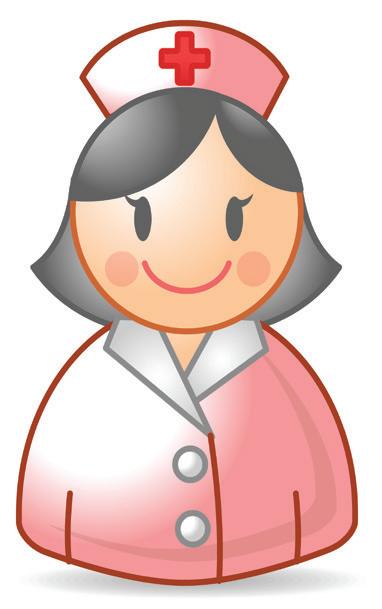
A.: No. Social Security pays only for total disability — conditions that render you unable to work and are expected to last for at least a year or end in death. No benefits are payable for partial disability or short-term disability, including benefits while on maternity leave.
Q.: I have been getting Social Security disability benefits for many years. I’m about to hit my full retirement age. What will happen to my disability benefits?
A.: When you reach full retirement age, we will switch you from disability to retirement benefits. But you won’t even notice the change because your benefit amount will stay the same. It’s just that when you reach retirement age, we consider you to be a retiree and not a disability beneficiary. To learn more, visit www.ssa.gov.

Dear Savvy Senior,
What steps need to be taken after a loved one dies? My 71-year-old uncle, who’s divorced with no children, has terminal cancer. He’s asked me to take care of his affairs so I would like to find out what I need to do after he passes away.

Unsure Nephew
I’m very sorry to hear about your uncle. The death of a loved one can bring about a host of different tasks and responsibilities. Here’s a list of some things you can do now, and after his death, that can help keep a sad event from becoming even more difficult.


There are several tasks you can do now while your uncle is still living that will make things easier for you after he dies.
For starters, find out where he keeps all his important papers like his trust or will (also make sure it’s updated), birth certificate, Social Security information, life-insurance policies, military discharge papers, financial documents, key or combination to a safe deposit box or a home safe. Also make a list of his digital assets (including usernames and passwords) like his email account, online banking accounts, social media accounts, etc.
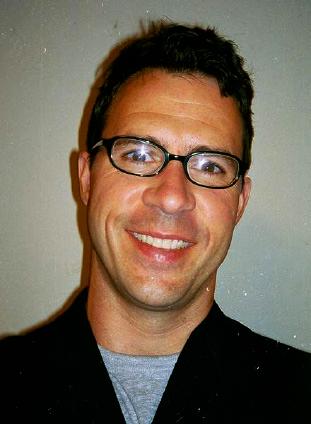
If your uncle doesn’t have an advanced directive, help him make one (see CaringInfo.org for free state-specific forms and instructions). An advanced directive includes a living will that specifies his end-oflife medical treatments and appoints a health-care proxy to make medical decisions if he becomes incapacitated. In addition, you should also make a do-not-resuscitate (DNR) order. Your uncle’s doctor can help you with this.
You should also pre-arrange his funeral, memorial service and burial or cremation.
Once your uncle dies, you’ll need to get a legal pronouncement of death. If no doctor is present, you’ll need to contact someone to do this.
If he dies at home under hospice care, call the hospice nurse, who can declare his death and help facilitate the transport of the body.
If he dies at home without hospice care, call your uncle’s doctor. You’ll then need to call the funeral home, mortuary or crematorium to pick up the body. If your uncle is an
organ or tissue donor, contact the funeral home or the county coroner immediately.
If funeral plans were not pre-arranged, you’ll need to make arrangements and prepare an obituary. If your uncle was in the military or belonged to a fraternal or religious group, you should contact those organizations too, because they may have burial benefits or conduct funeral services.
You should also notify family members, close friends and his employer if he was still working, and make sure his home is secured.
To wind down your uncle’s financial affairs, you’ll need to get multiple copies of his death certificate, which are typically ordered by the funeral home.
If you’re the executor of your uncle’s estate, take his will to the appropriate county or city office to have it accepted for probate. And open a bank account for your uncle’s estate to pay bills, including taxes, funeral costs, etc.
You also need to contact your uncle’s estate attorney if he has one; tax preparer to see if estate or final income taxes should be filed; financial adviser for information on financial holdings; life insurance agent to get claim forms; his bank to locate and close accounts; and Social Security, the VA (if he’s a veteran) and other agencies that provided benefits in order to stop payments.
You should also cancel his credit cards, delete or memorialize his social media accounts and, if relevant, stop household services like utilities, mail, etc. His home and personal belonging will also need to be dealt with in the coming weeks.
remote places. It’s a tough task but we’re up to it with you.
Excellus BlueCross BlueShield has appointed three new members to its senior leadership team. They will take on new roles as part of the health plan’s population health engagement leadership team working to ensure equitable access to high-quality, affordable care.
They are:
• Pharmacist Mona Chitre has
At Excellus BCBS, Harris maintained a focus on the larger strategy of improving health care for all as she collaborated on innovative solutions including a clinical queries system allowing key stakeholders to receive a coordinated response to clinical questions within 24 hours. She worked to develop a multifunctional high-cost claimants team designed to engage case managers earlier on in the member experience.
• Tony Vitagliano has been
not require open-heart surgery and is typically performed under general anesthesia or conscious sedation. To date, the device has been implanted in more than 200,000 patients around the world.
experience.
Vassallo has served on nonprofit boards including the Ronald McDonald House, the National Eating Disorders Association and Prep for Prep. She has participated in continuous executive education and personal leadership curriculum at Columbia University Business School, New York, and is a member of the American College of Healthcare Executives.
Mona Chitre
been named president of pharmacy solutions, in addition to her role as chief pharmacy officer. In her expanded role, Chitre will focus on delivering clinically sound pharmacy solutions to enable growth and diversification and bolster investments and innovation in all areas of the rapidly changing pharmacy landscape. She joined the health plan in 2000.
Chitre oversees Excellus BCBS’s pharmacy program, focusing on ways to drive affordable drug costs, quality outcomes, and appropriateness of care for the health plan’s 1.5 million Upstate New York members.
Under Chitre’s leadership, the health plan’s pharmacy program has developed numerous programs to improve the health and well-being of the communities it serves. The introduction of the innovative RxConcierge savings outreach program and initiatives focusing on generic medications, medication adherence, and specialty medications have helped members access quality, affordable medications and earned the health plan national recognition. During her tenure, the health plan’s Medicare Part D prescription drug plan has received a five-star rating from the Centers for Medicare and Medicaid Services, its highest rating, for seven consecutive years, making it the longest leading, and one of only two five-star plans in the nation.
• Physician Lisa Harris has been
appointed senior vice president and corporate medical director for Excellus BCBS. In her new role as SVP corporate medical director, she will work closely with senior leaders to drive engagement, innovation, clinical quality, equitable access and affordability, as well as enable efficiency and satisfaction among the health plan’s provider partners. Harris joined the health plan in 2018.
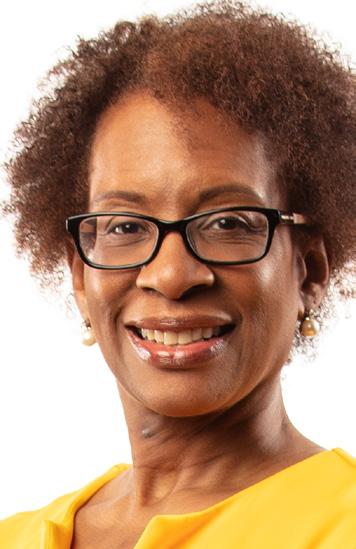
She previously served as vice president of medical affairs for commercial lines of business where she was closely aligned with the sales team serving as a clinical liaison and leading the clinical affordability strategy.
named senior vice president, provider network engagement. In his new role, Vitagliano will continue to focus on the health plan’s provider partnership strategy in addition to now leading the areas of payment integrity, medical policy and risk adjustment. He will also serve as a member of the health plan’s executive team. Vitagliano joined the health plan in 1993.
Vitagliano began his career with the health plan as an actuarial analyst and has held several positions during his time with the organization. Most recently, he served as vice president, provider network management and operations, leading teams dedicated to provider contracting, provider relations, value-based payments, and reimbursement.
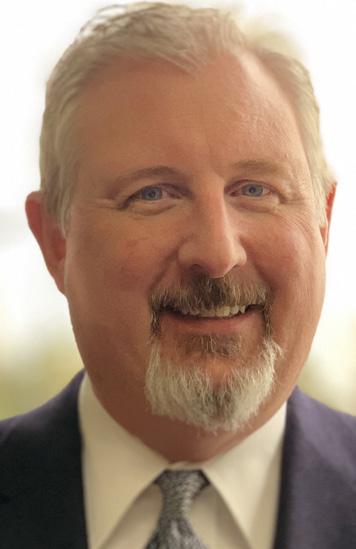
During his career, Vitagliano led the development of Excellus BCBS’s accountable cost and quality agreement (ACQA) model, providers partnership strategy, and the alignment of clinical quality and efficiency.
“Through their partnership with our providers and community members, each of these leaders has made a significant impact in achieving our health plan’s mission of ensuring equitable access to affordable, high-quality care,” said Jim Reed, Excellus BCBS president and CEO. “I’m excited to see our efforts in the area of population health engagement continue to grow under the strategic leadership of these highly skilled and experienced individuals.”
Mohawk Valley Health System (MVHS), in partnership with Central New York (CNY) Cardiology, performed the 200th WATCHMAN procedure at its St. Elizabeth Campus Dec. 21.
WATCHMAN is an innovative, one-time procedure that reduces the risk of strokes that originate in the left atrial appendage (LAA). The procedure, which was performed by physician Faisal Saiful of CNY Cardiology, has emerged as a life-changing alternative for people who live with a daily risk of stroke and who want an alternative to drug treatment therapy.
The WATCHMAN is a device which is inserted into the LAA of the heart through a small incision in the groin. The implant procedure does
“I am proud of the program and the partnership we have developed here at MVHS,” said Sassower, medical director of the structural heart program at MVHS. “The WATCHMAN device is an important part of stroke management for patients with atrial fibrillation, especially patients who should be on oral anticoagulation but cannot take it for various reasons.”
In addition to reducing the risk of stroke, the device removes the risk of bleeding that can come with the long-term use of blood thinners like Warfarin (also known as Coumadin). The procedure has been available at MVHS since 2019.
Once the device is implanted it forms a seal, permanently closing off the LAA and reducing the risk of stroke in patients with an irregular heart beat (atrial fibrillation) who are not suitable for blood thinners.
Sherrie Vassallo has joined the Mohawk Valley Health System (MVHS) as vice president of operations. In her new position, she will provide operational and strategic planning and efficiency for MVHS.
Vassallo received her Bachelor of Arts in sociology and business management from Utica College in Utica. She received her master’s degree in biomedical science from the University of Pennsylvania, Philadelphia.
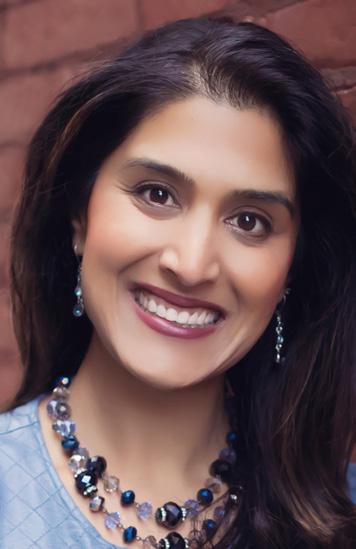
Vassallo began her career at Rome Medical Group. She worked in pediatric cardiac surgery at the Children’s Hospital of Philadelphia while obtaining her graduate degree. Prior to joining MVHS, she served in a range of director levels and above positions in various areas including clinical, operational, research programming, and administrative and executive leadership roles.
She has worked at community hospitals, as well as large academic healthcare systems including St. Joseph’s Health, Ellis Medicine, Hospital for Special Surgery and Weill-Cornell Medical College/New York Presbyterian Hospital. She has more than 20 years of healthcare
U.S. News & World Report, the global authority in hospital rankings and consumer advice, has named Rome Health as a 2022-2023 high performing hospital for maternity care in the uncomplicated pregnancy category. This is the highest award a hospital can earn for U.S. News’ Best Hospitals for Maternity Care.
The annual evaluation is designed to assist expectant parents and their doctors in making informed decisions about where to receive maternity care.
Rome Health earned a high performing designation in recognition of maternity care as measured by factors such as newborn complication rates.
“We are very excited to receive this award,” said physician Ankur Desai, OB-GYN department chairman. “At Rome Health, the maternity staff and the providers work together to assure the best possible care for our patients. Receiving this honor just reinforces the excellent work the maternity staff performs everyday at Rome Health.”
U.S. News evaluated nearly 650 hospitals that provide high-quality labor & delivery services for uncomplicated pregnancies for its 2022-2023 Best Hospitals for Maternity Care. .
“When expectant parents are considering their options for welcoming a baby to the world, the Best Hospitals for Maternity Care are designed to help them identify hospitals that excel in delivering babies for uncomplicated pregnancies,” said Ben Harder, chief of health analysis and managing editor at U.S. News. “A hospital that has earned a high performing designation may be a good option for parents, in consultation with their medical provider, to consider.”
The residents of the Mohawk Homestead, an assisted living community in Mohawk, enjoy being able to give back to the community. With this spirit, they collected money and made donations to local charities. They visited the Herkimer County Humane Society twice in December and socialized with the cats and dog. They also volunteered as bell ringers for the Salvation Army during the Christmas season.

A recent article by the Cleveland Clinic states that people who are healthy and not undergoing treatments for health problems should not bother taking vitamin D — local experts weigh in
By Deborah Jeanne SergeantFor years, health experts touted vitamin D as a companion supplement to aid in absorption of bone-strengthening calcium. Vitamin D became a veritable panacea and research linked it to supporting nearly every bodily function and system.
More recently, the importance of vitamin D has been minimized.
A recent article by the Cleveland Clinic stated that people who are healthy and not undergoing treatments for health problems should not bother taking vitamin D.
WebMD cites several research studies in a recent article to show that vitamin D isn’t a superstar supplement, as it does not appear to lower risk of cancer, stroke or heart attack as once thought (although its role in calcium absorption remained intact).

The National Institutes of Health link excessive vitamin D with stomach discomfort, unusual mental symptoms and kidney problems.
“Large-scale studies have found
that deficiency is widespread in not just adults but in children as well,” said Laurel Sterling, registered dietitian, certified nutritionist and educator with Carlson Laboratories in Canastota. “Vitamin D has been seen in research with promoting healthy growth and development, supporting teeth, bone and muscle health, assisting with a healthy immune and cardiovascular system as well as aiding in a healthier mood.”
Although vitamin D is important for building bone, Sterling said that bones also need other vitamins and minerals to stay strong.
The body generates vitamin D when exposed to sunlight. However, people in the north experience little exposure to sunlight all winter.
“With some people, the level between June and November is decent, but it falls off between January and April,” said Laura Vreeland, registered dietitian at the Syracuse VA Medical Center.
The only way to know one’s vita-
So, after a month of holiday eating, your pants are still too tight and you’re desperate to lose the extra weight as quickly as possible, but how much can you lose in a month?
Experts say there is no speedy way to shed pounds.
How long does it take to lose weight? According to the U.S. Centers for Disease Control and Prevention, people who succeed do it gradually at about 1 to 2 pounds per week, which translates into 4 to 8 pounds a month.
Because safely losing weight is such a gradual process, it can take six months or more to lose 30 pounds. But it’s well worth it as you change your lifestyle and look and feel better, experts say.
Losing weight permanently is really a matter of changing your lifestyle and diet. The best way is to set safe, achievable goals that you can meet.
That all starts with understand-
ing that fad diets or highly restrictive eating plans may prompt fast weight loss, but not permanent weight loss.
“Fad diets, by today’s standards, do not work. By work, I mean a sustainable lifestyle that promotes a healthy weight and meets the nutrient needs of the individual,” said Samantha Heller, a nutritionist at NYU Langone Health in New York City.

“We need to buckle down and face the fact that a constant diet of fast, junk and prepared foods is not healthy,” Heller stressed in a recent HealthDay story. Beware: You can gain weight eating anything — even healthy food — so portions matter, she warned.
Once you’ve taken off the weight, rely on a healthy diet and exercise to keep the pounds off.
The first step to a successful weight-loss program is taking a hard look at your diet. Make a list of what
min D levels is lab testing. Vreeland also looks for things like decreased energy and mood during the winter months, even in people with low to normal vitamin D levels. Some of her clients take vitamin D supplements only during the winter months. Others take it all year long, depending upon their health needs.
“Vitamin D is not a set panel for a routine physical,” Vreeland said. “There’s a bit of disparity as to what they recommend for the normal levels between the Endocrine Society and the Institutes of Medicine.”
She encourages people to ask their primary care provider to test their vitamin D level to see if supplementation is needed. Most providers will not bring up vitamin D as part of a routine visit.
Maria Winkworth, registered dietitian, certified nutritionist and owner of Winkworth Wellness in Syracuse, said that getting five to 30 minutes of sunlight several times a week works to spur the body to generate vitamin D, but “if you’re sitting in your house or office near the window, or in your car, you won’t get D that way,” she said. “Window glass blocks UV light. You have to be outside.”
Unfortunately, natural sunlight is hard to come by this time of year. Until spring, seeking supplements and foods rich in vitamin D can help sustain vitamin D levels. Winkworth said that the better form is vitamin D-3, not D-2.
“D-2 is made from plants,” she said. “Most experts recommend D-3 because our bodies absorb and use it better.”
Once you know you need to take vitamin D, “follow up testing eight to 12 weeks after supplementation is suggested to make sure serum levels are improving,” said Julie Mellen, registered dietitian with Upstate Medical University. “If vitamin D stores are normalized, then repeat testing every two to three years is suggested unless there are any major changes in overall health.”
you eat and drink, including sugar-sweetened drinks and alcohol, the CDC says. Also, list your triggers to overeating. These can be:
• Eating too fast.
• Always cleaning your plate.
• Eating when not hungry.
• Eating while standing up (may lead to eating mindlessly or too quickly).
• Always eating dessert.
• Skipping meals (or maybe just breakfast).
But don’t just focus on the negative. Give yourself points for your good eating habits.
Also, list those things you do that are linked to overeating. These can include:
• Grabbing your favorite snack food.
• Watching TV.
• Eating before or after stress at work.
• Not planning a healthy meal.
• Eating sweets at work or during the day.
• Hitting a fast-food drivethrough on the way to work.
• Using food to fight boredom or lift your mood.
Knowing your triggers you can make a special effort to avoid them, or replace them with healthier options. For example, you can bring
The daily value for vitamin D is 800 IU (20 mcg). Few naturally occurring food sources of vitamin D-3 exist and most of those are fish. Mushrooms provide only traces of the less helpful D-2 and they are the only vegan, non-supplemental source of either type of vitamin D.
Egg yolk contains 37 IU of vitamin D, although pastured hens may provide three to four times that amount because of their exposure to sunlight. Cod liver oil boasts 450 IU per teaspoon. Canned light tuna offers 269 IU per 3.5-ounce helping.
Try 3.5-ounce servings of these fish for more D-3:
Salmon 526 IU
Fresh Atlantic herring 214 IU
Canned sardines 193 IU
Halibut 190 IU
Mackerel 643 IU
In addition to milk, fortified foods include some brands of breakfast cereal, orange juice and yogurt.
healthy snacks to work and train yourself to avoid stopping at fastfood drive-throughs.
Going back to your list, you can start by replacing unhealthy eating with healthy choices and healthy habits.
Only eat when you are hungry and don’t gobble your food, rather, eat slowly. If you eat when bored, try taking up another activity that doesn’t involve food.
A healthy diet consists of fruits, vegetables, whole grains and dairy products, the CDC says. Also add a variety of proteins, such as seafood, lean meats and poultry, eggs, beans and peas, soy products, nuts and seeds.
A healthy diet should be low in sugar, salt, saturated and trans fats and cholesterol.
You can swap water, seltzer, or unsweetened fruit juices or diet drinks, for sugary drinks and sodas.
But it’s not only what you eat, but how much you eat. Weight gain and weight loss is a matter of how many calories you eat versus how many calories you burn.
Stanton hated college. She couldn’t decide what career she wanted to study or pursue.
She took a year off from school to figure out what she really wanted to do in her life.
Her mother, Susanne Stanton, told her to get a job, but Jenna was more interested in starting her own business.
“I came home from a couple years of being at college,” Jenna said. “I just hated everything about it. I couldn’t really decide on what I wanted to study, so I decided to take a year’s break. My mom told me to go out and find a job, but it didn’t sound really fun to me. I wanted to do my own thing. So I said ‘alright, I’m going to open up a farmers’ market stand selling açai bowls.’” She explained that açai bowls are smoothie fruit bowl made from açai berries.
“She had no idea what they were,” Jenna said. “So I made her one just to try it out and she was hooked. She said ‘OK I will help you in these farmers’ markets.’”
Jenna went to a wide variety of farmers’ markets, trying to sell her homemade açai bowls. She made a lot of money and received good feedback from the people who bought them.
Jenna’s own product became popular throughout Central New York. This was what kickstarted her business.
“They became such a smashing success,” Jenna said. “They were just so popular and people were so excited about them. We realized that CNY needed a different kind of healthy eating alternative, aside from sandwiches and salads. So my mother offered to open up a storefront with me. She taught me how to run a business.”
In 2018, Jenna and her mother found the perfect spot, in Clinton, to run their café.
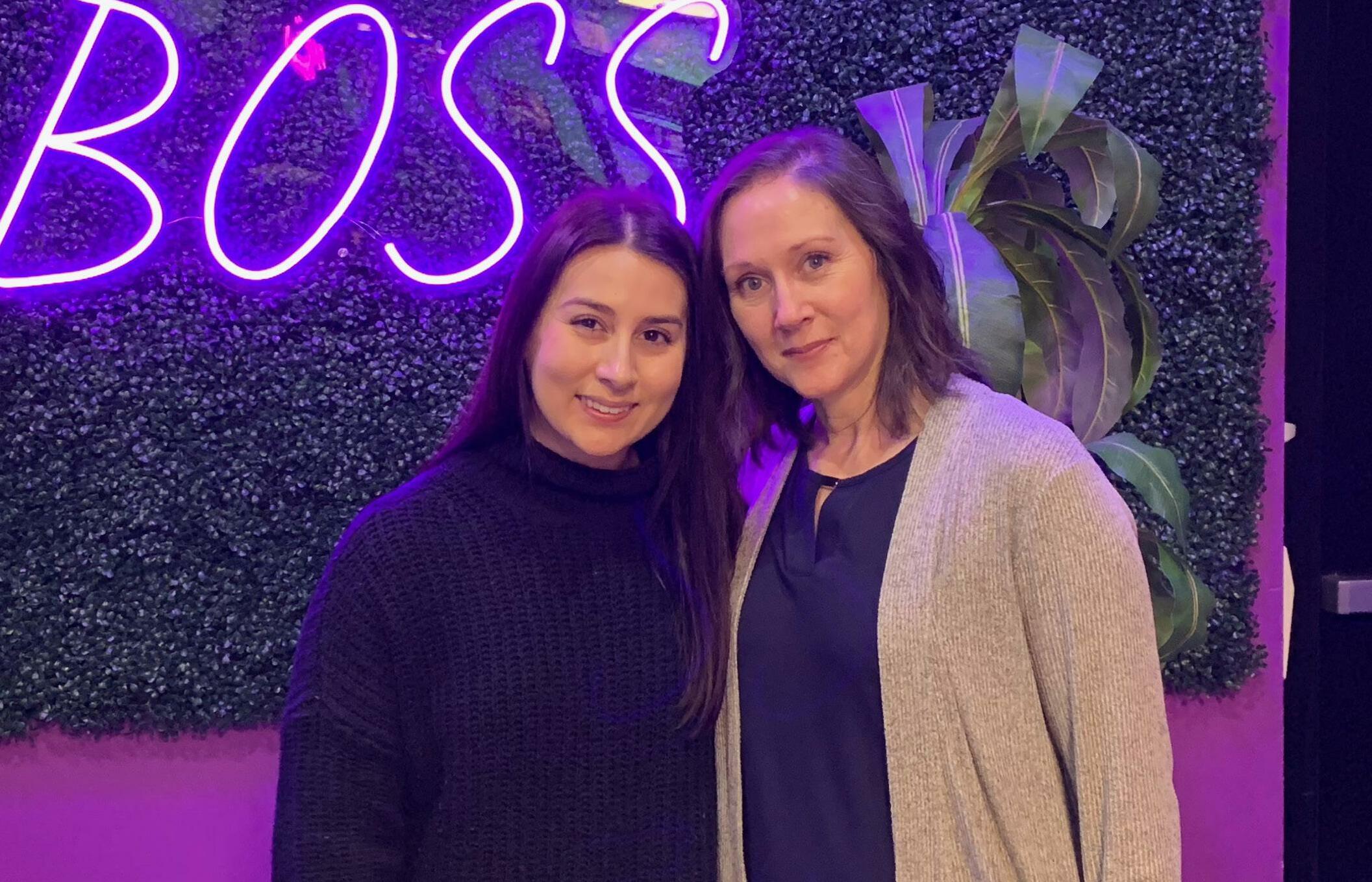
Jenna made açai and other fruit bowls, while her mother paid the bills, handled the money and kept her daughter’s business financially afloat.
The turnout at Jenna’s café was good. The place was always busy. Many people, young and old, tried Jenna’s fruit bowls and loved them. Jenna and her mother moved the café to New Hartford and expanded. They opened their second store in Rome and are going to open their third in Fairmount.
“We get pretty busy each day,”
Jenna said. “We have a large mix of people young and old that come in here. We get little love notes on our emails all the time from happy customers. I see photos shared all the time with people talking about how much they loved their visit here.”
Jenna is now the owner of Bowl Boss. She found her true purpose in life.
The fruits bowls are delicious and beautiful-looking. They are also packed with anti-oxidants. Anti-oxidants, according to Jenna, helps people fight off illness or disease. These bowls have a lot of fiber and protein in them. They contain no sugar or preservatives. They have no gluten and are allergy-friendly.
“They’re not just pretty food bowls,” Susanne said. “Our bases are made from superfruits, which are loaded with antioxidants, minerals, vitamins and they are really healthy for you.”
These fruit bowls have a smoothie base. The base is made up of one or many fruits blended and poured in the bottom of the bowl. The staff then puts sliced fruits at the top of the base. These toppings include sliced bananas, sliced strawberries, sliced pineapple, blueberries, granola and coconut strips.



“A lot of people like to top their bowls with granola,” Jenna said. “From there you can add on your favorite fresh fruits and drizzle local honey and peanut butter that’s all-natural. We have five bases. We have açai (dark purple berries from South America), pitaya, coconut, banana and a green-blend that has kale, banana and pineapple in it.”
At Bowl Boss, customers can build their own bowls with their favorite fruits.
Not interested in fruit bowls? This café also makes/serves fruit smoothies and waffles.
Jenna heard rumors and read articles about how fruits have a lot of sugar and less nutrients. But she doesn’t believe it.
She sees fruit as a healthy product.
“A lot of times, I think fruit gets a bad rap out there for having ‘too much sugar,’” Jenna said. “People don’t understand how fruit can do so much for you. I do believe that our foods, we’re selling, is power. It’s fuel for your day. It’s medicine. It has a ton of nutrients. It has powers that regular food does not.”